Nebraska: A September Scouting Mission to the Sandhills and Beyond
It’s another travel blog folks! I’m happy to report that Janice and I chalked a new state (Nebraska) and saw a ton of terrain we never knew existed. We drove, hiked, and fished through badlands, high alpine mountains, deserts, sandhills and everything in between. Still, while the scenery captivated us mile after mile, it was hard to ignore the heavy hand of humanity on the landscape. This left me wanting for a glimpse of what things might have been like only a couple hundred years ago. I’ll dive deeper into these observations later.
As per usual in my travel blogs, I’ll start with a discussion about the planning process. Then, I’ll get into the play-by-play/execution. I’ll follow that up with some general observations and what I learned on the trip. Enjoy!
Planning the trip to Nebraska
Every year, between Christmas and New Years, I plan my vacations for the upcoming year. I block time in February, March, June, July, and August. If business is good throughout the spring and summer and fall bookings look solid, I’ll do something last minute in September.
Business was excellent this past spring and summer and fall bookings came very early this year. So much so, in mid-July I started to look at opportunities to go somewhere in September. When I looked at my September schedule, I had 6 open days in a row. It was a sign I should do something bigger than a short chalking mission.
Janice and I hadn’t done a trip with just us 2 this year so I put together a itinerary that would be captivating for both of us. Some sightseeing, some fishing, lots of “just us” time. Varied and captivating terrain was a must. So was the opportunity to chalk up a new state. Here is what I came up with. As always, maps and internet search engines played a huge role.
Day 1 – Fly into Albuquerque, NM and drive to Durango, CO.
Day 2 – drive from Durango, CO to Navajo Dam, NM. Fish the San Juan River. Drive to Great Sand Dunes National Park.
Day 3 – tour Great Sand Dunes. Drive to Ogallala, NB.
Day 4 – Fish Lake McConaughy
Day 5 – Fish Lake McConaughy
Day 6 – Drive to Denver, CO. Fly home.
In total – we would drive 1100 miles and fish 2 states. I’ve been to Colorado to fish a couple times. Nebraska would be new territory all together.

Execution of the Nebraska Trip
Other than a cold front that rolled in on Day 5 and brought huge winds/unfishable conditions with it, the itinerary worked out perfectly. In fact, that cold front gave us a “day off” and time to explore the sand hills. Because our flight out of Denver departed in the evening, I was able to make up for lost time on the water on day 6. Here’s the play by play:
Day 1 – Drove from Albuquerque, NM to Durango, CO
It was a 3-hour drive. All was smooth until we got up to around 7,000’ in elevation and ran right into a wild storm. Lightning seemed to be crashing all around the car. Rain, sleet, and hail came in sideways, and the roads were covered in a thin layer of ice. Driving was white knuckle for 45mins or so until we got through it. When we arrived in Durango, CO, we found the perfect spot to watch the sunset.
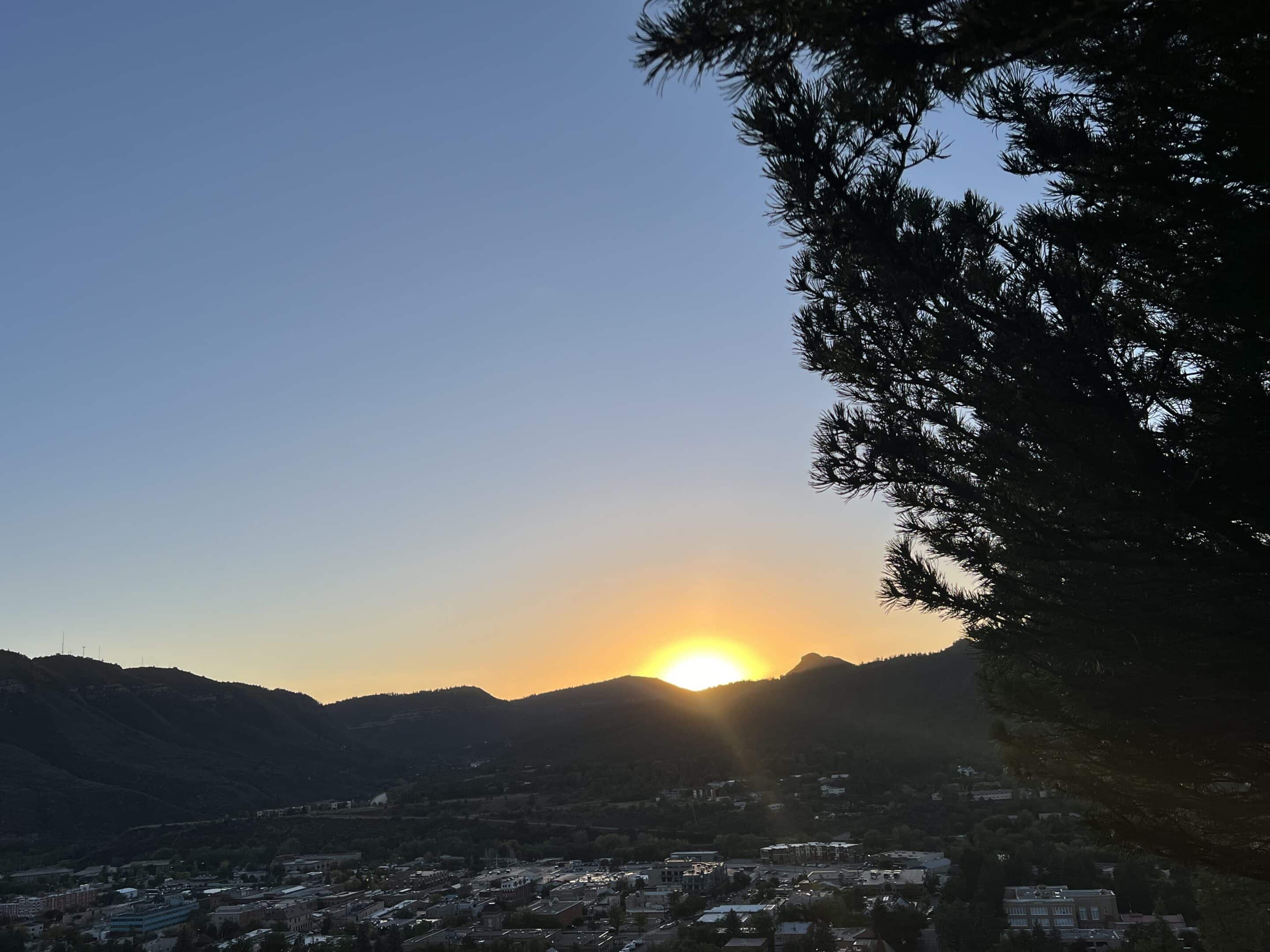
Day 2 – Durango, CO to Navajo Dam, NM, to Great Sand Dunes National Park
We drove from Durango to Navajo Dam in the morning and fished the San Juan River with Michael Mote from Durango Fly Fishing Guides, Heads Up Fly Fishing, Orvis-Endorsed. Following a 6-hour float, we drove to Great Sand Dunes National Park.
I’ll get deeper into what I saw on the San Juan later, but in short, it’s a crowded but beautiful and bountiful fishery. The water is super clear and when you look down, there are giant trout everywhere. All of them are eating super small bugs. The flies we used were one step above microscopic, but damn, they worked. I caught many rainbows and a couple browns. Here are a few photos.
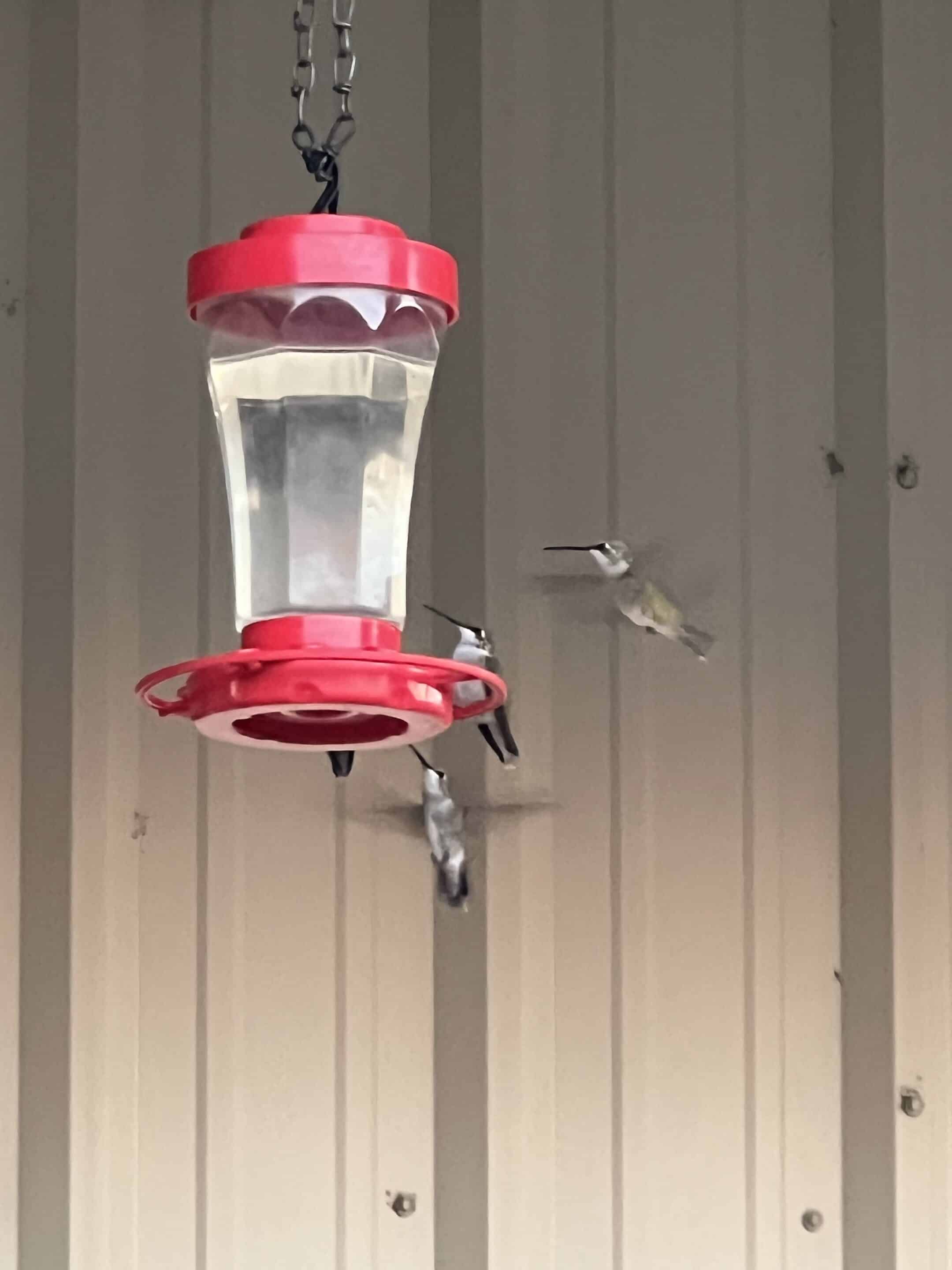
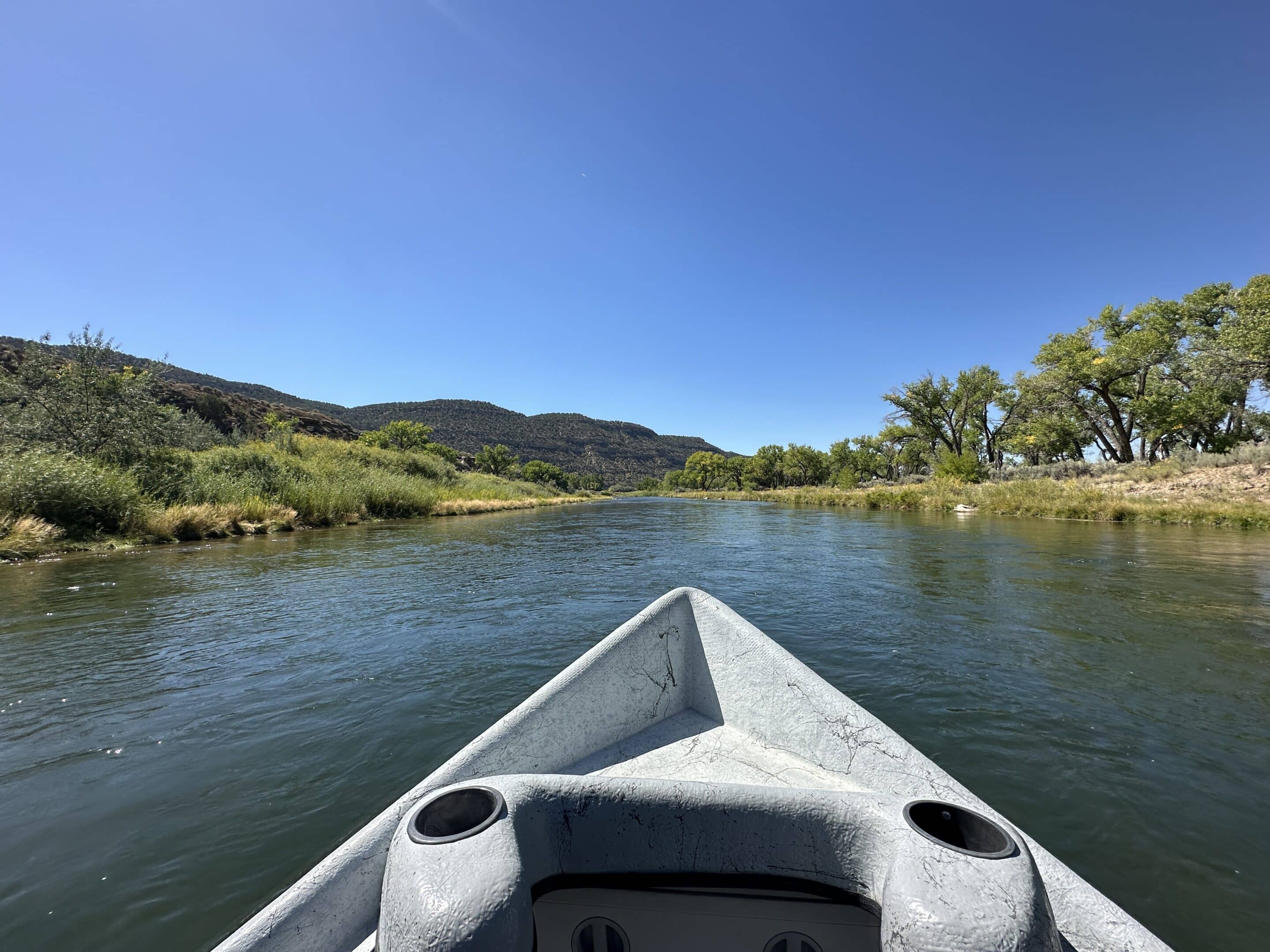
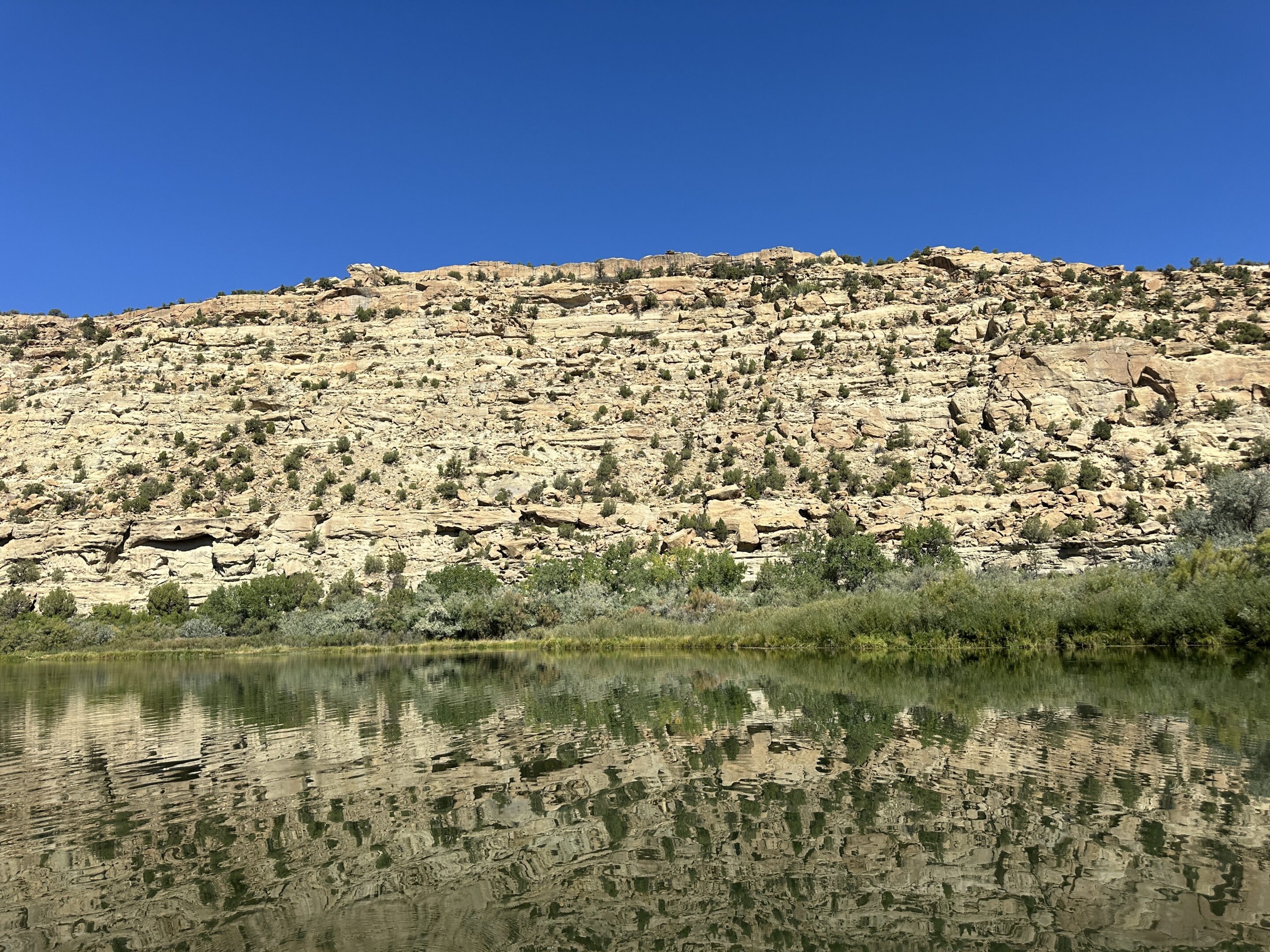
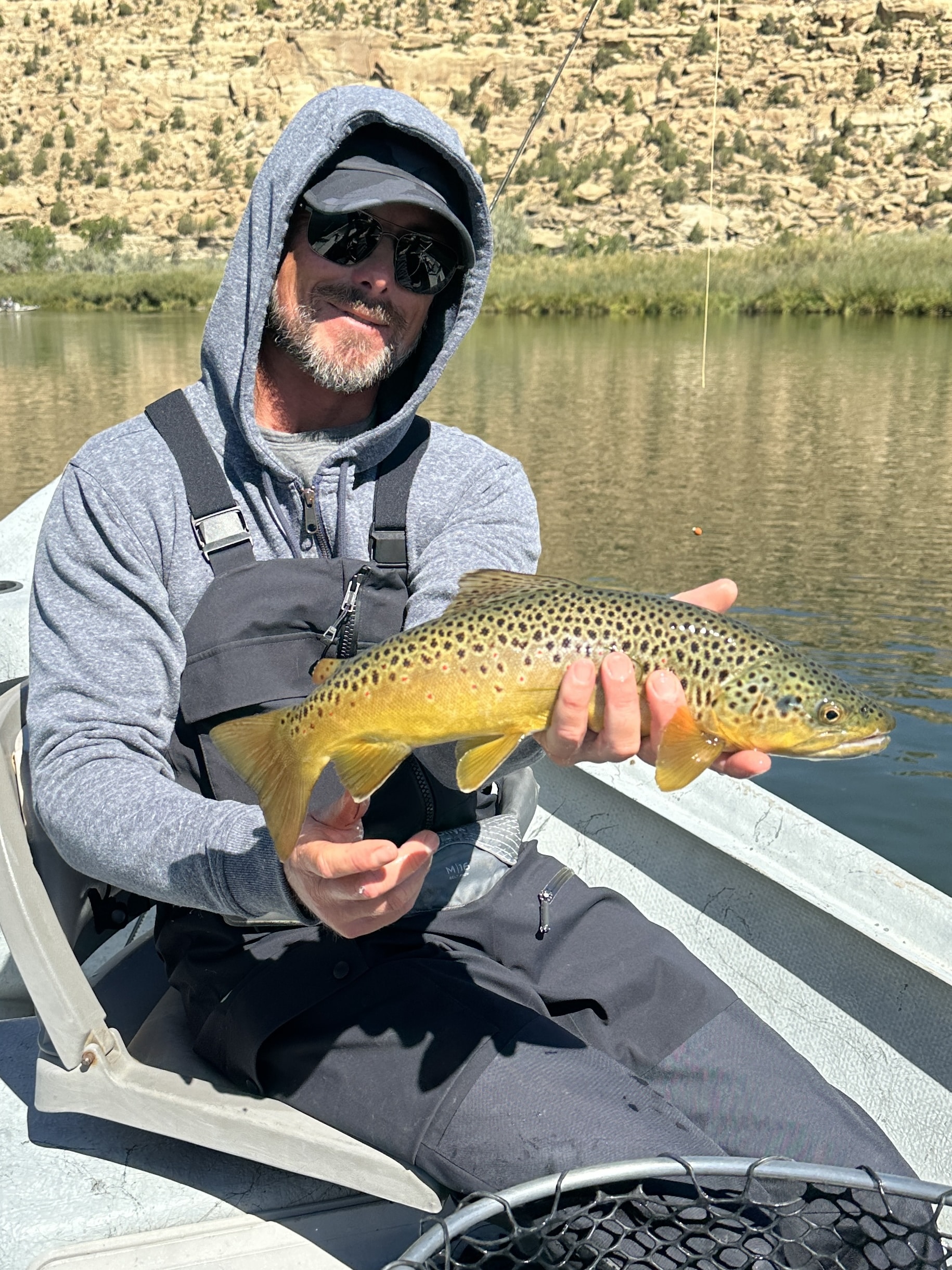
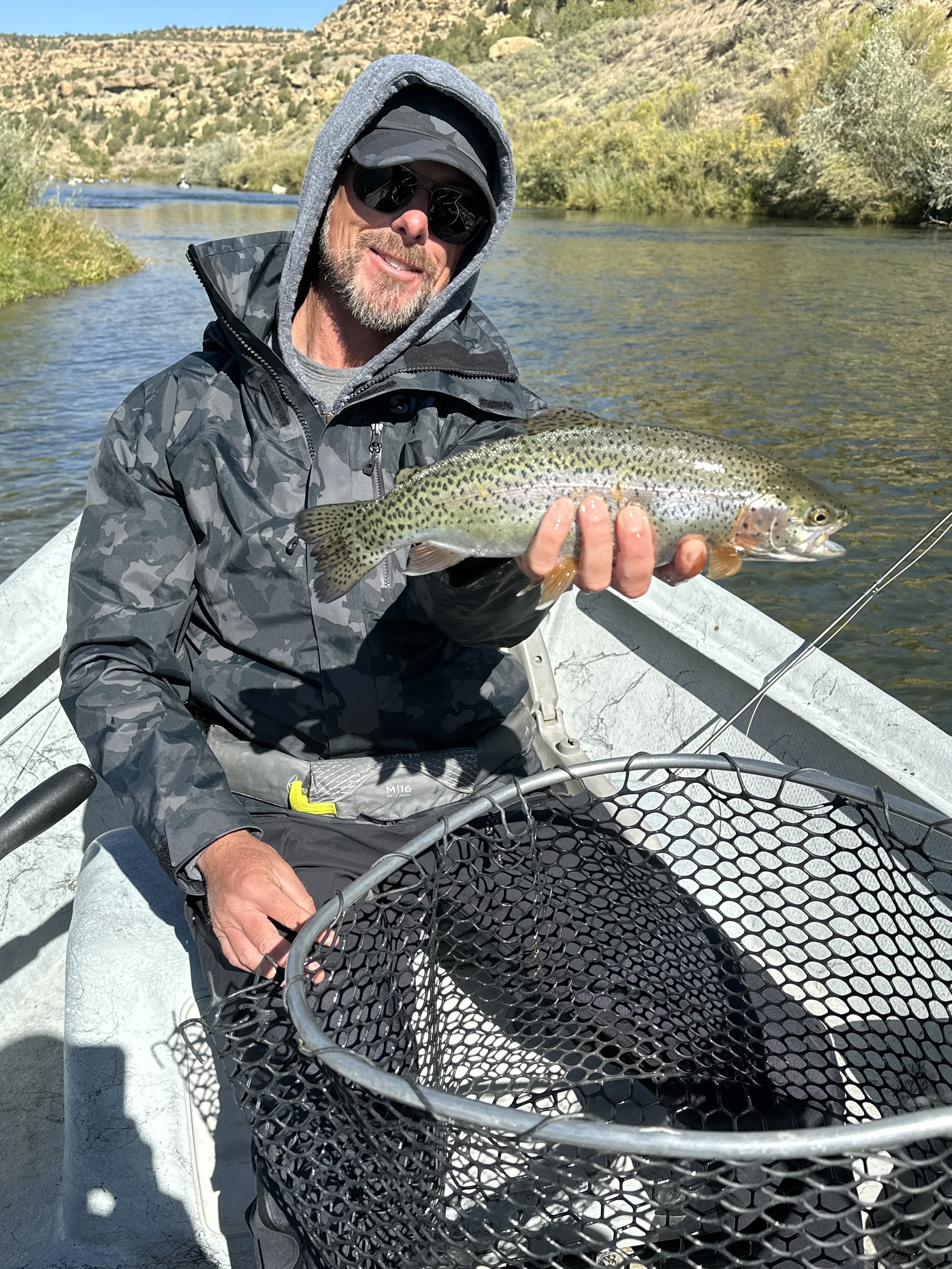
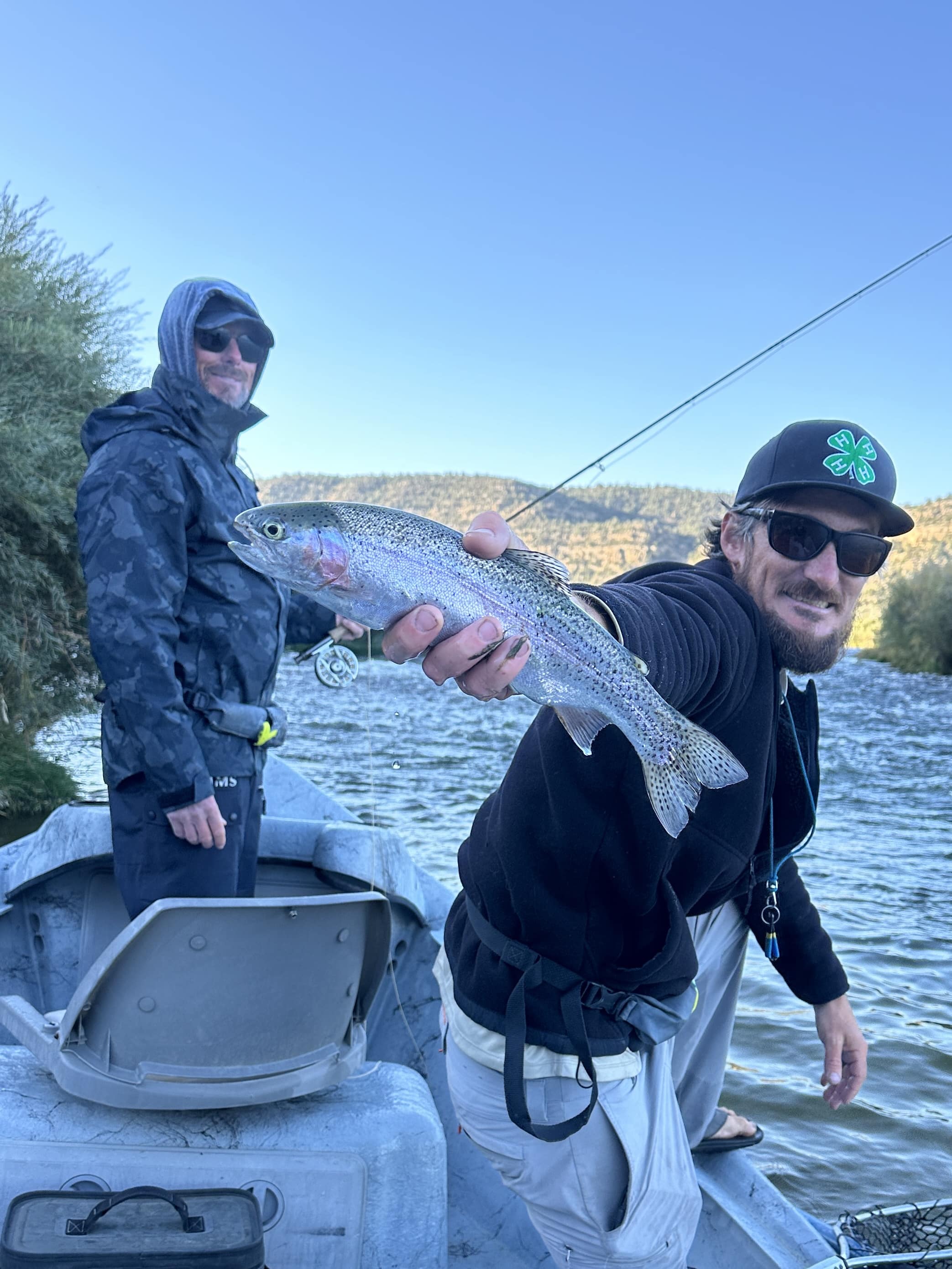
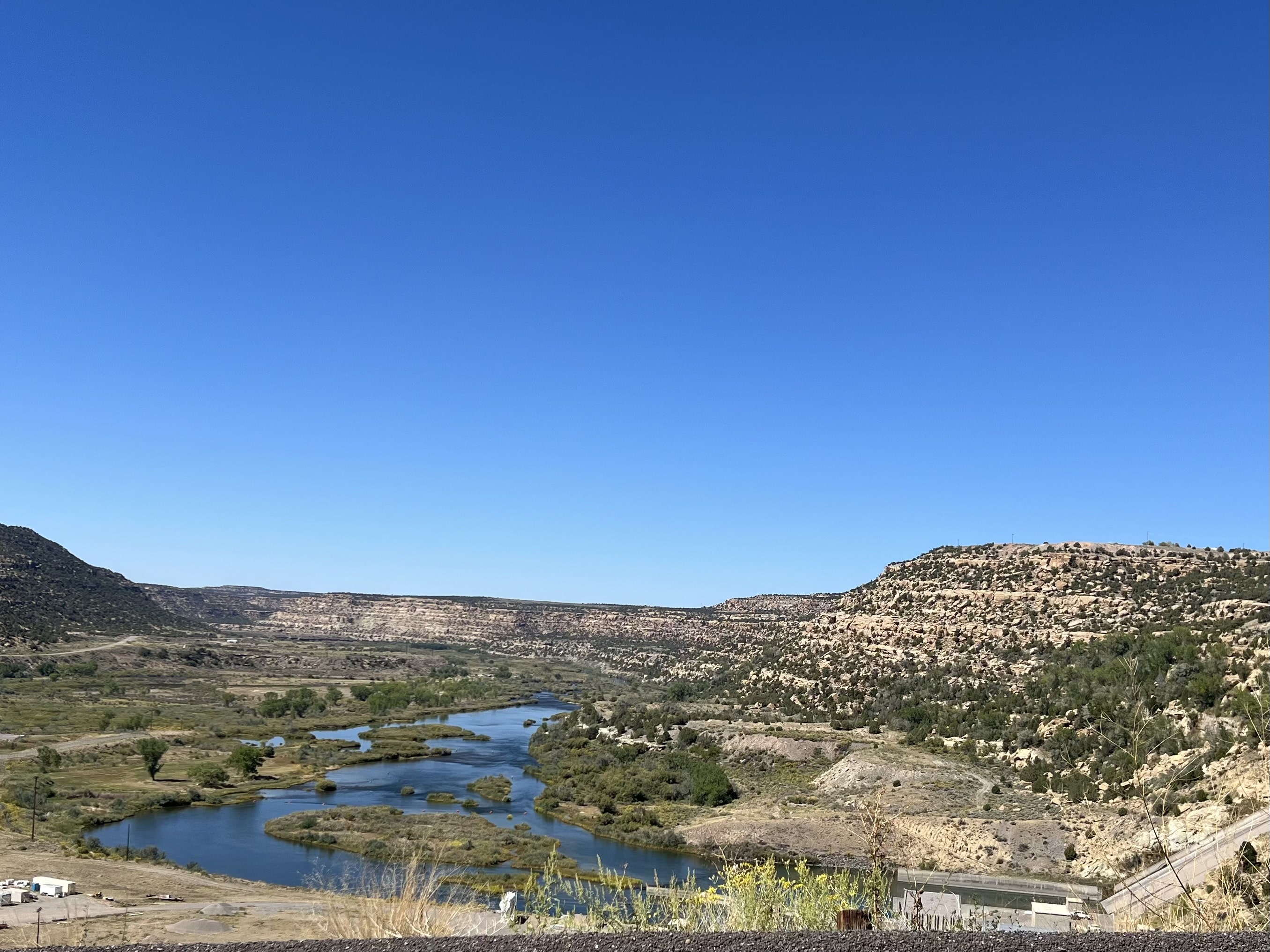
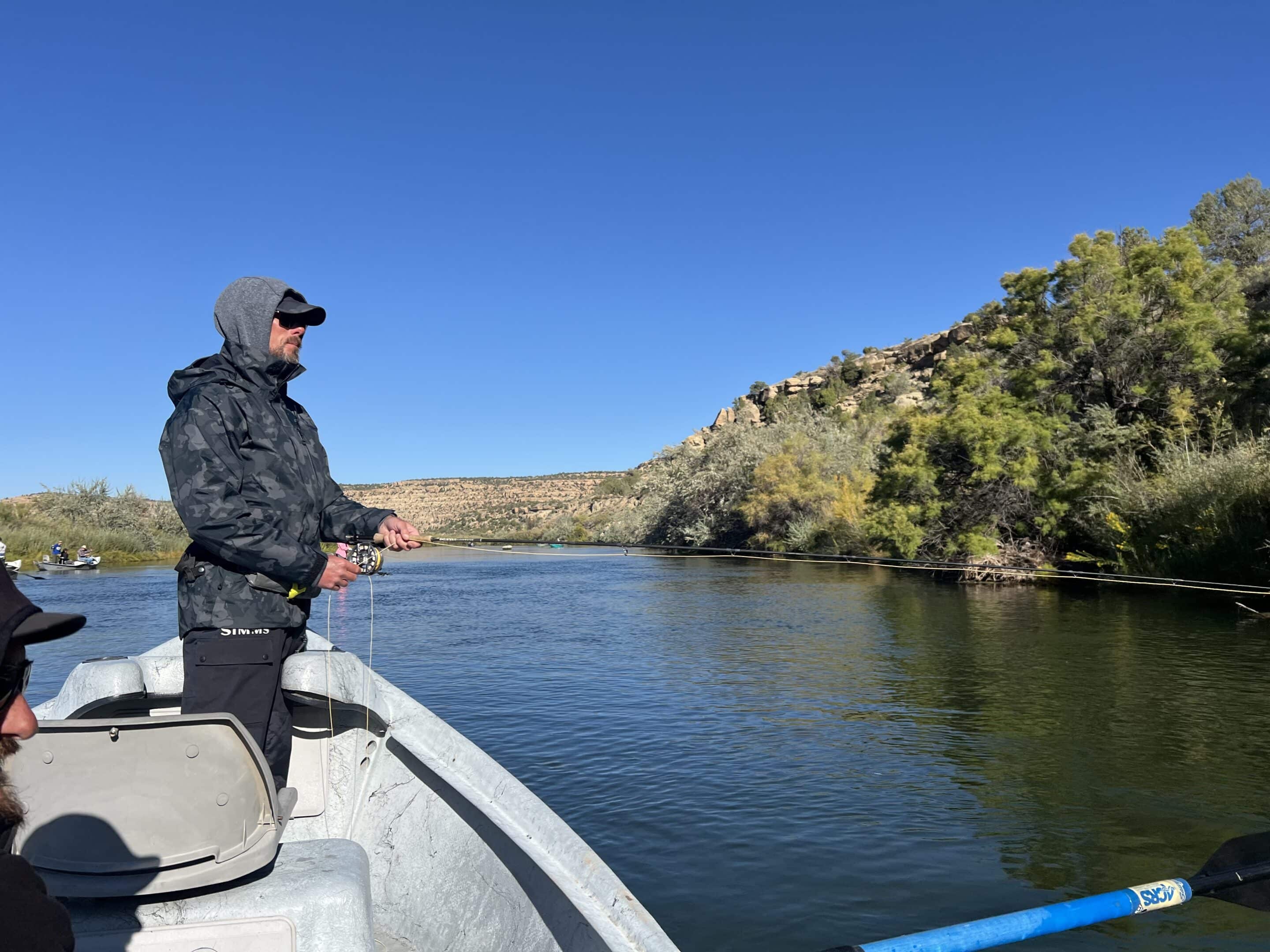
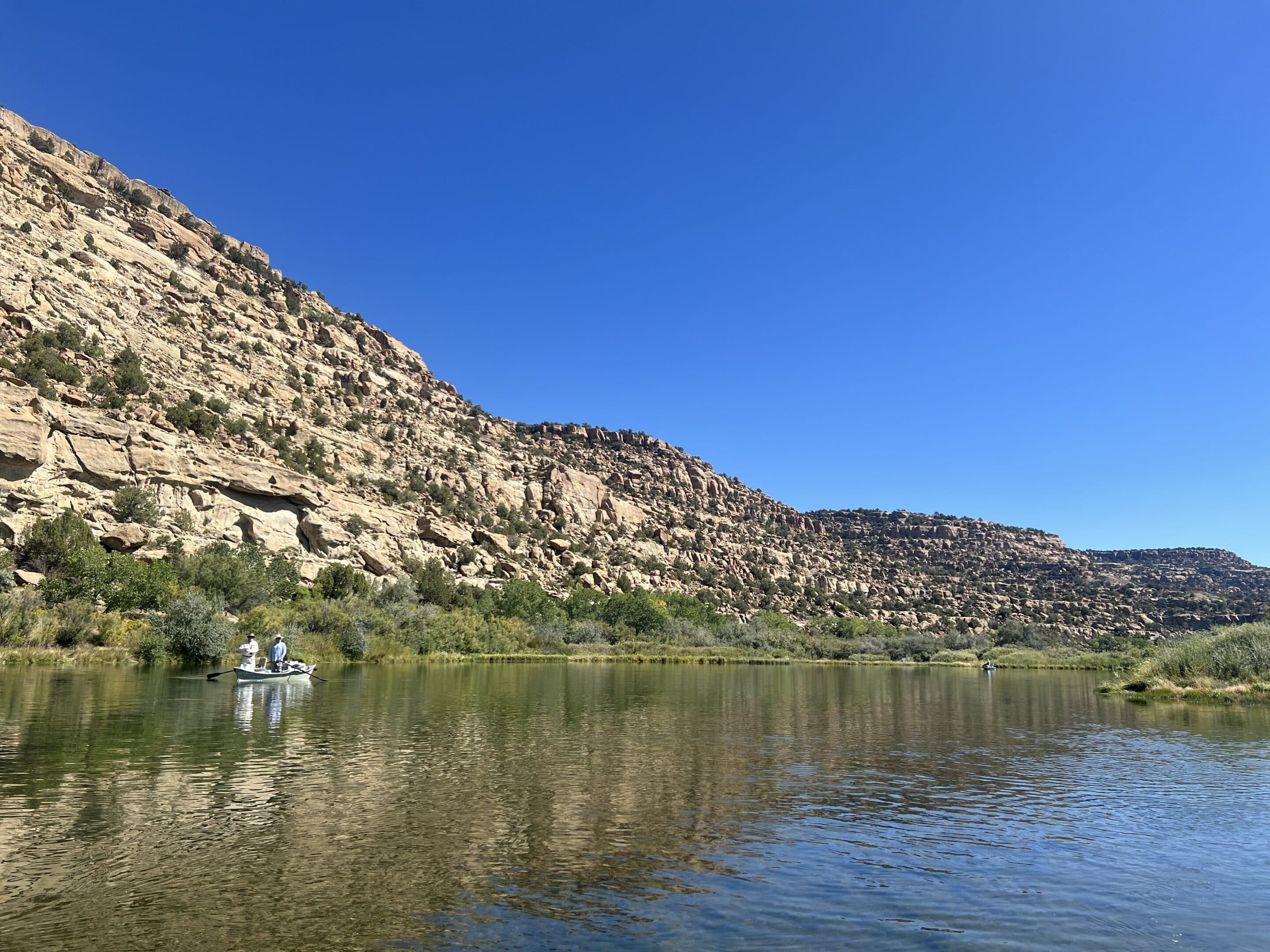
We hit the road around 1:30PM for Great Sand Dunes and arrived before 5:00PM. Here’s where we stayed: Great Sand Dunes Lodge – ReservationDesk.com
The lodge was great considering the remoteness of the area. All we needed was a good view of the landscape and we got just that. The dunes dominated the scene from the back porch. We spent the evening hiking the dunes until sunset. The scenery was incredible. I’ll say it again, pictures just don’t do it justice but here’s a few anyway.
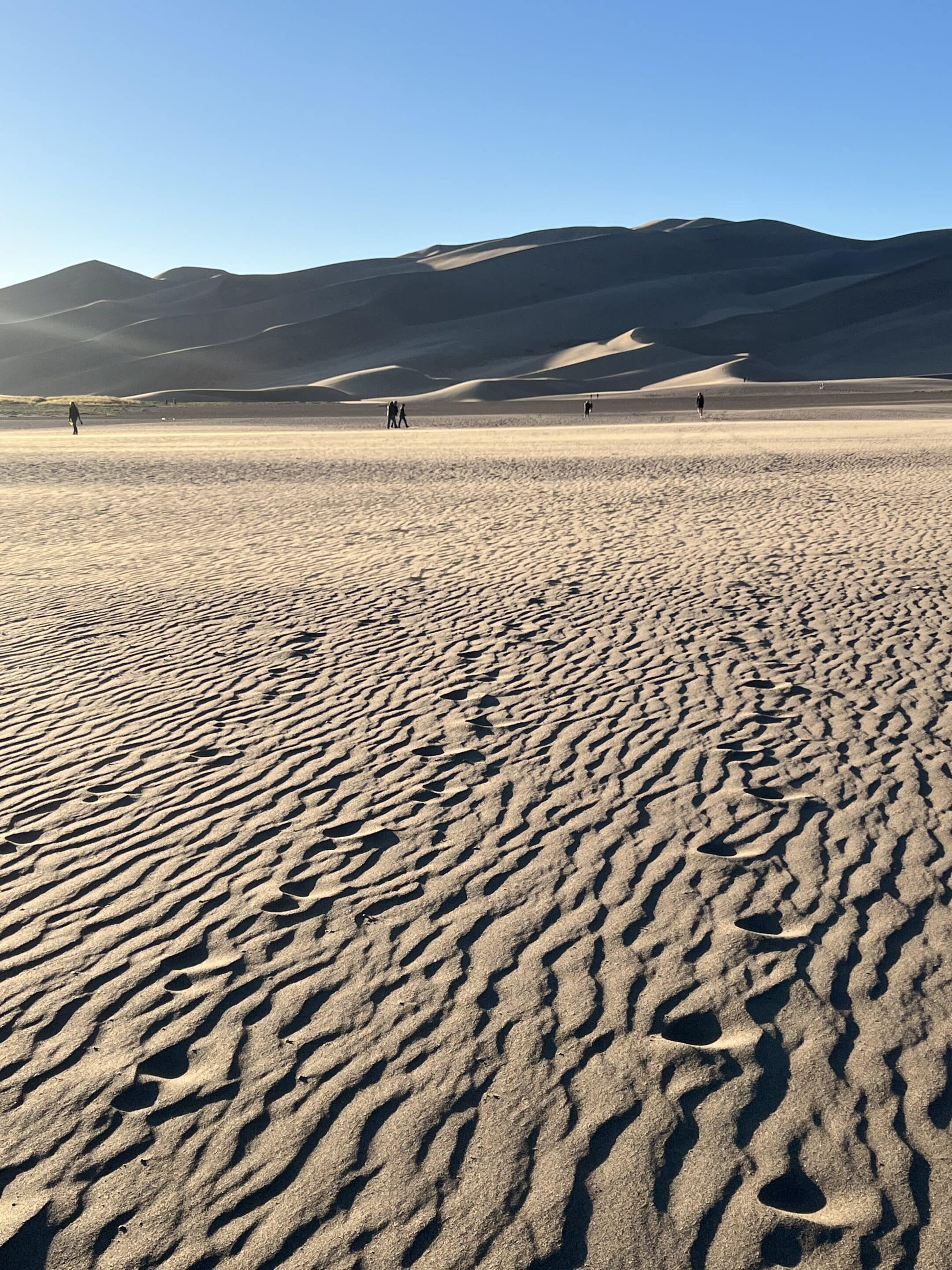


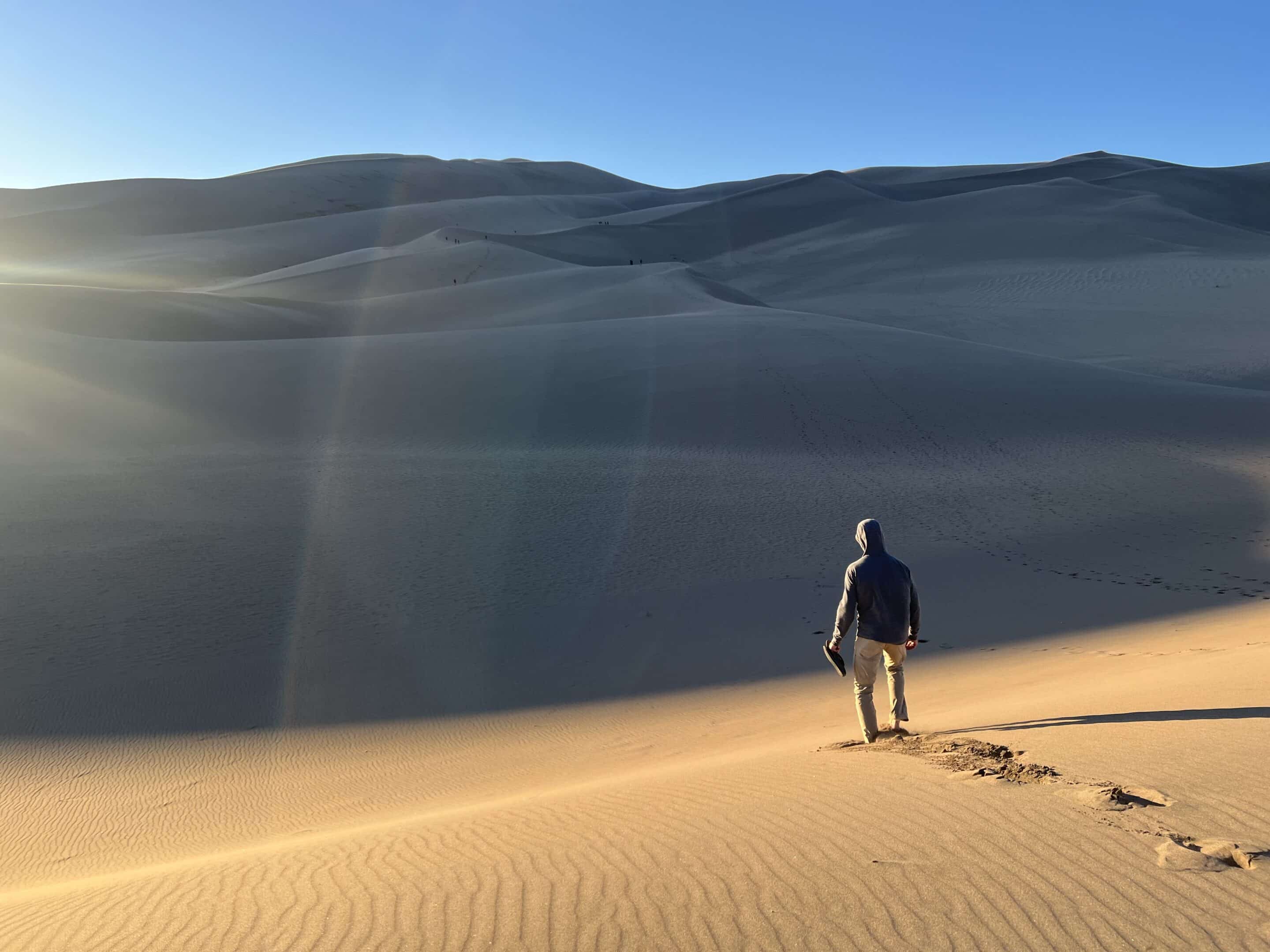

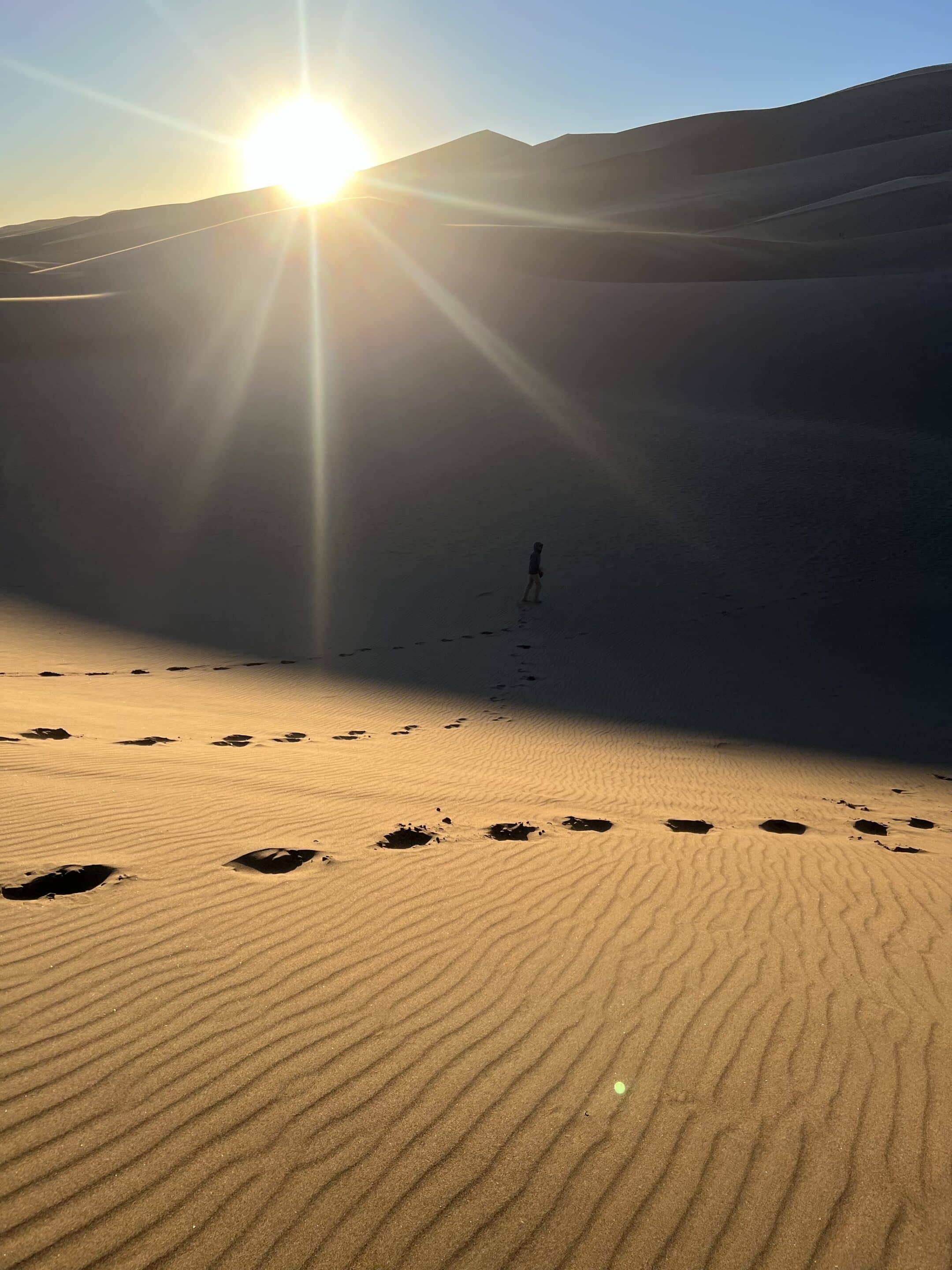
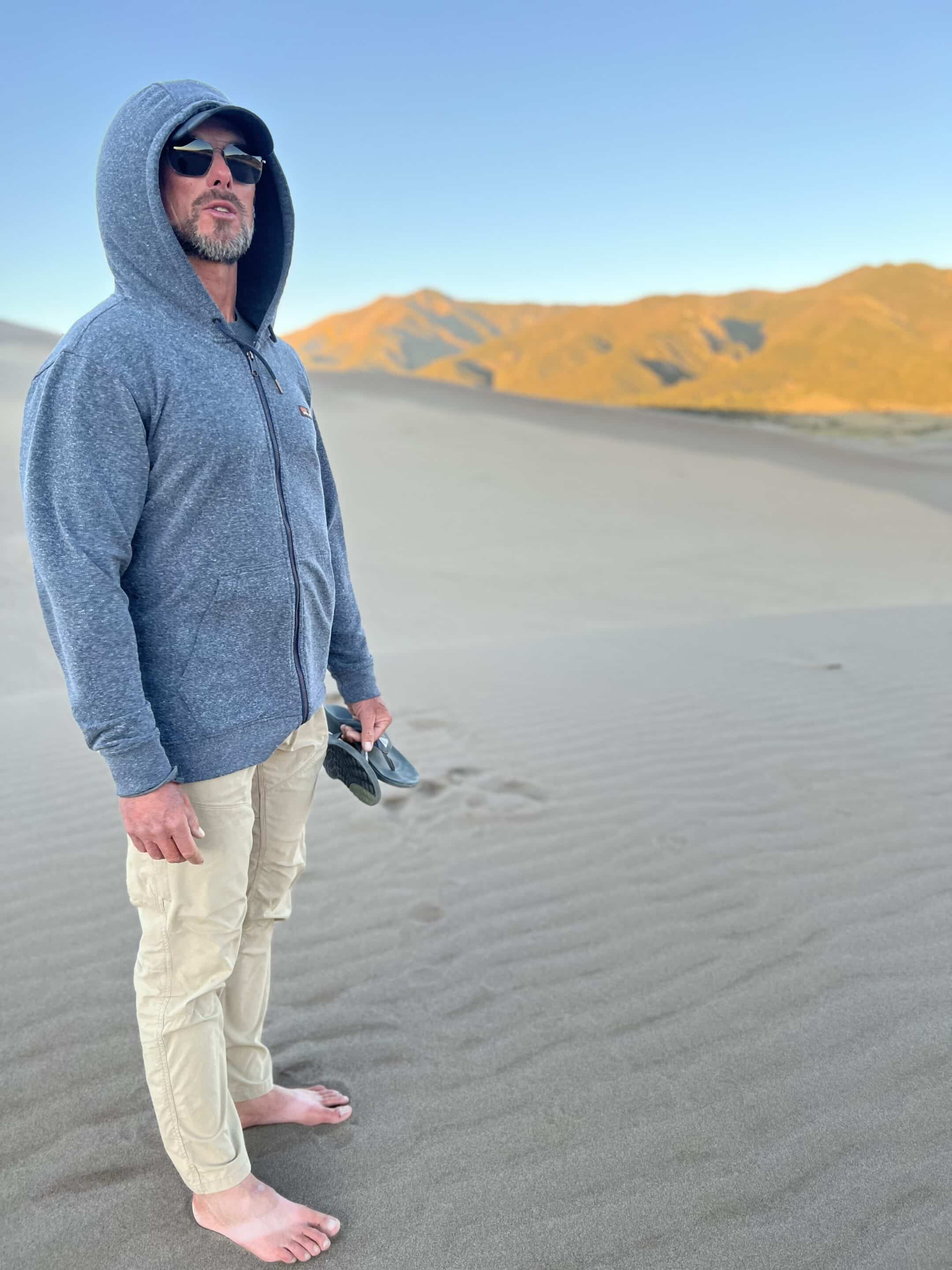

Day 3 – Great Sand Dunes to Ogallala, Nebraska
Janice and I woke up early and hiked the Dunes for a couple hours. I wanted to get to the highest peak in the dunes to see what it looked like from up there. It was wild – the sand was ice cold and the view was amazing. Here are a few photos:
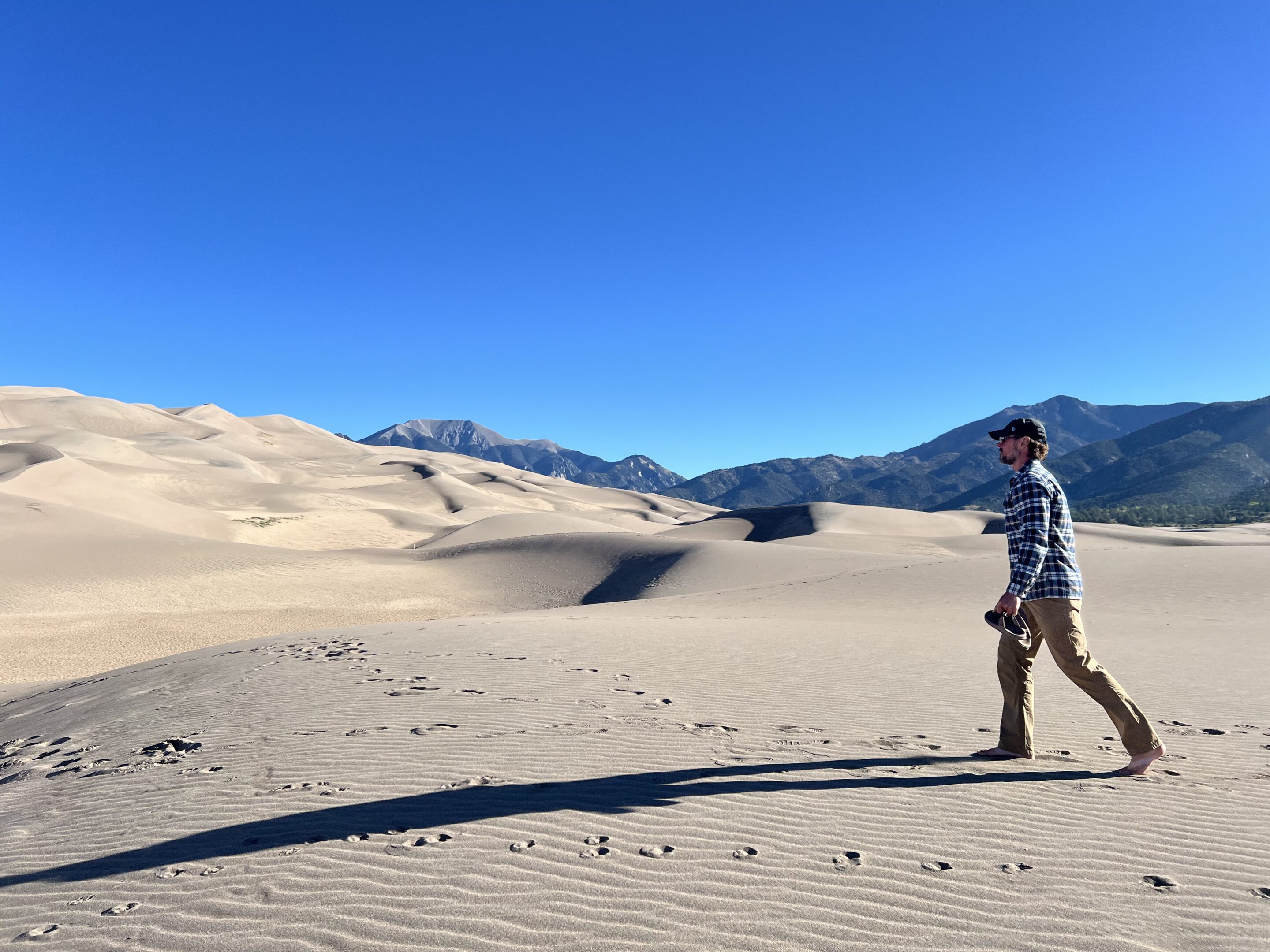
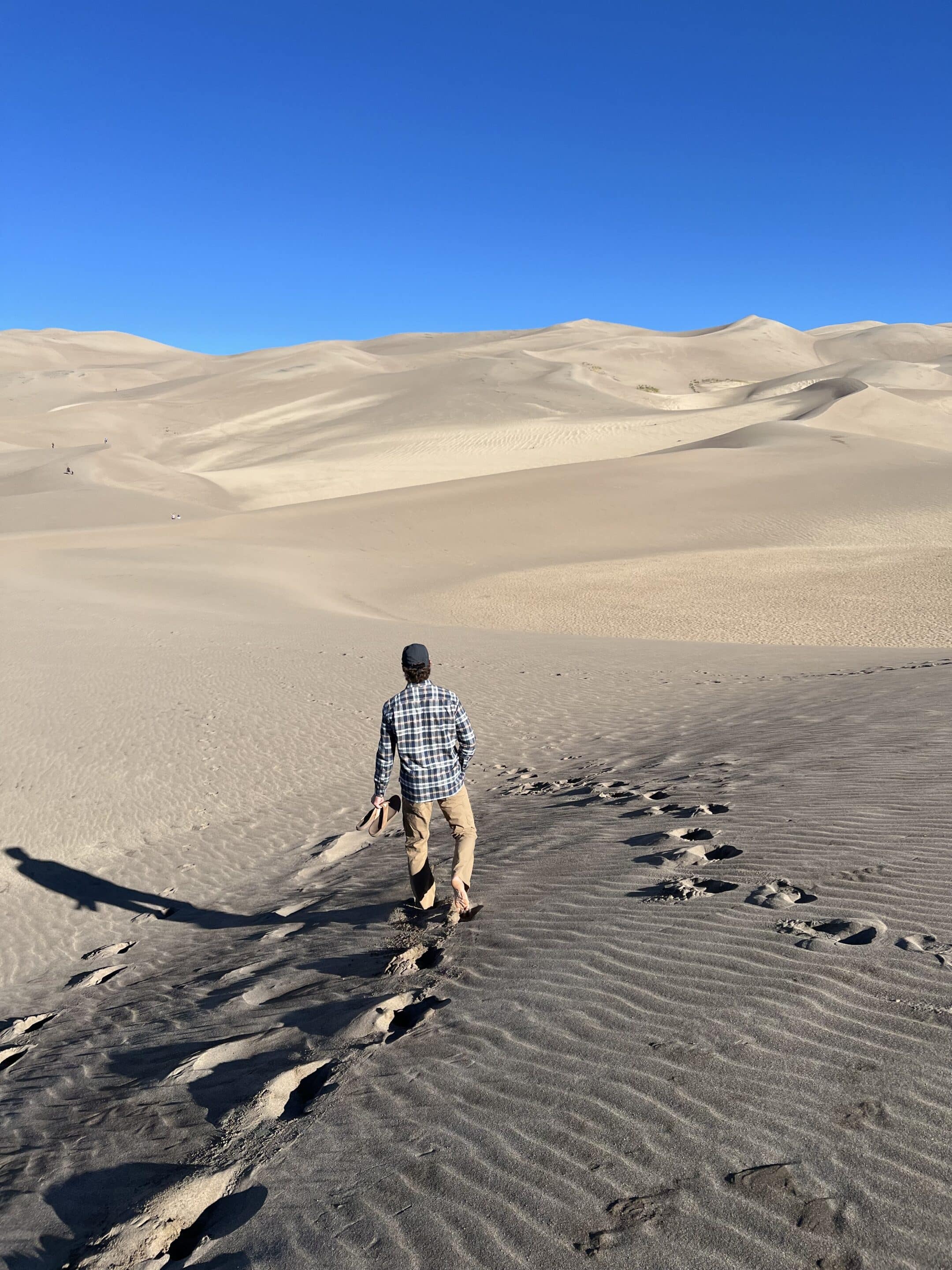
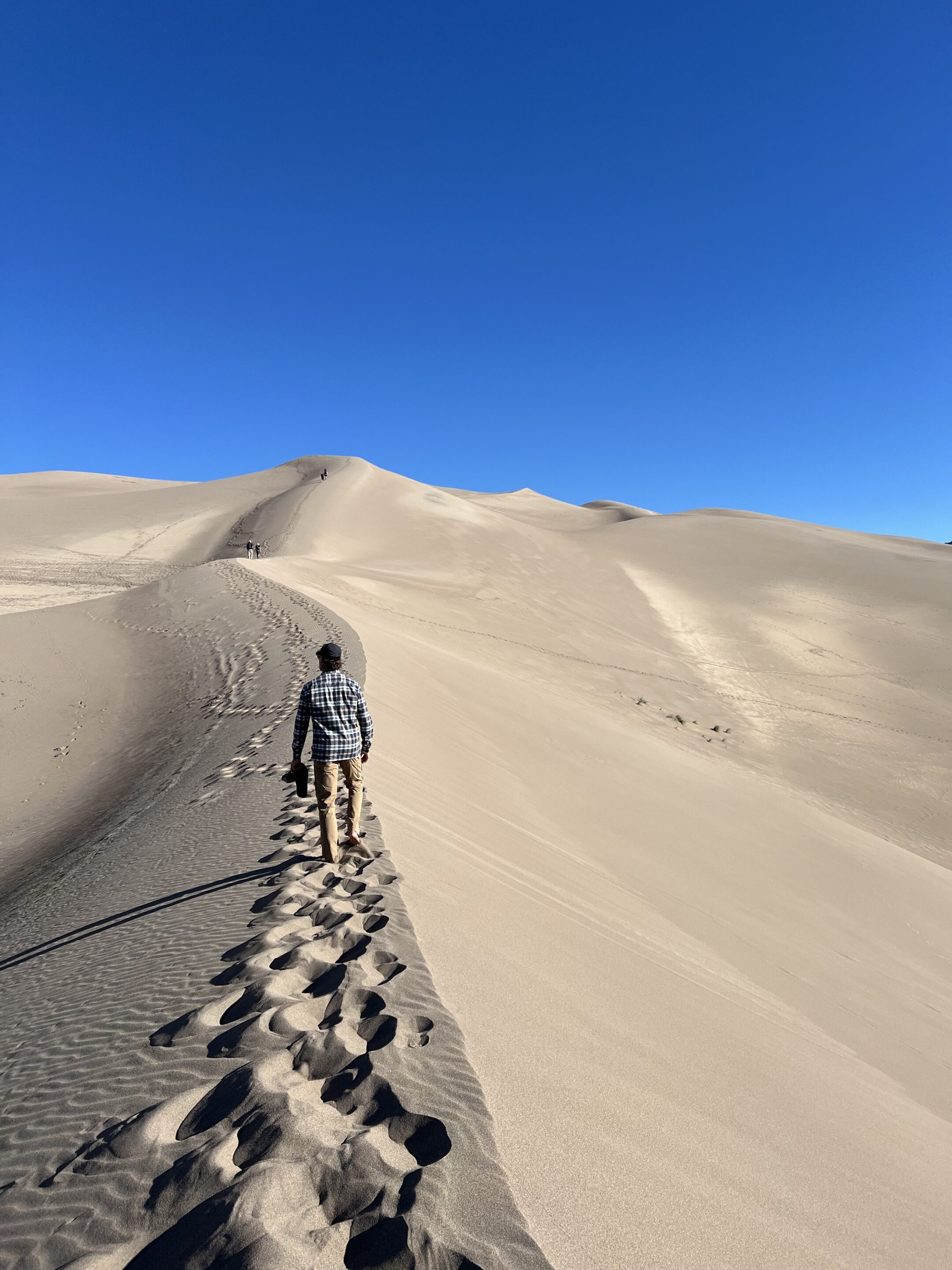

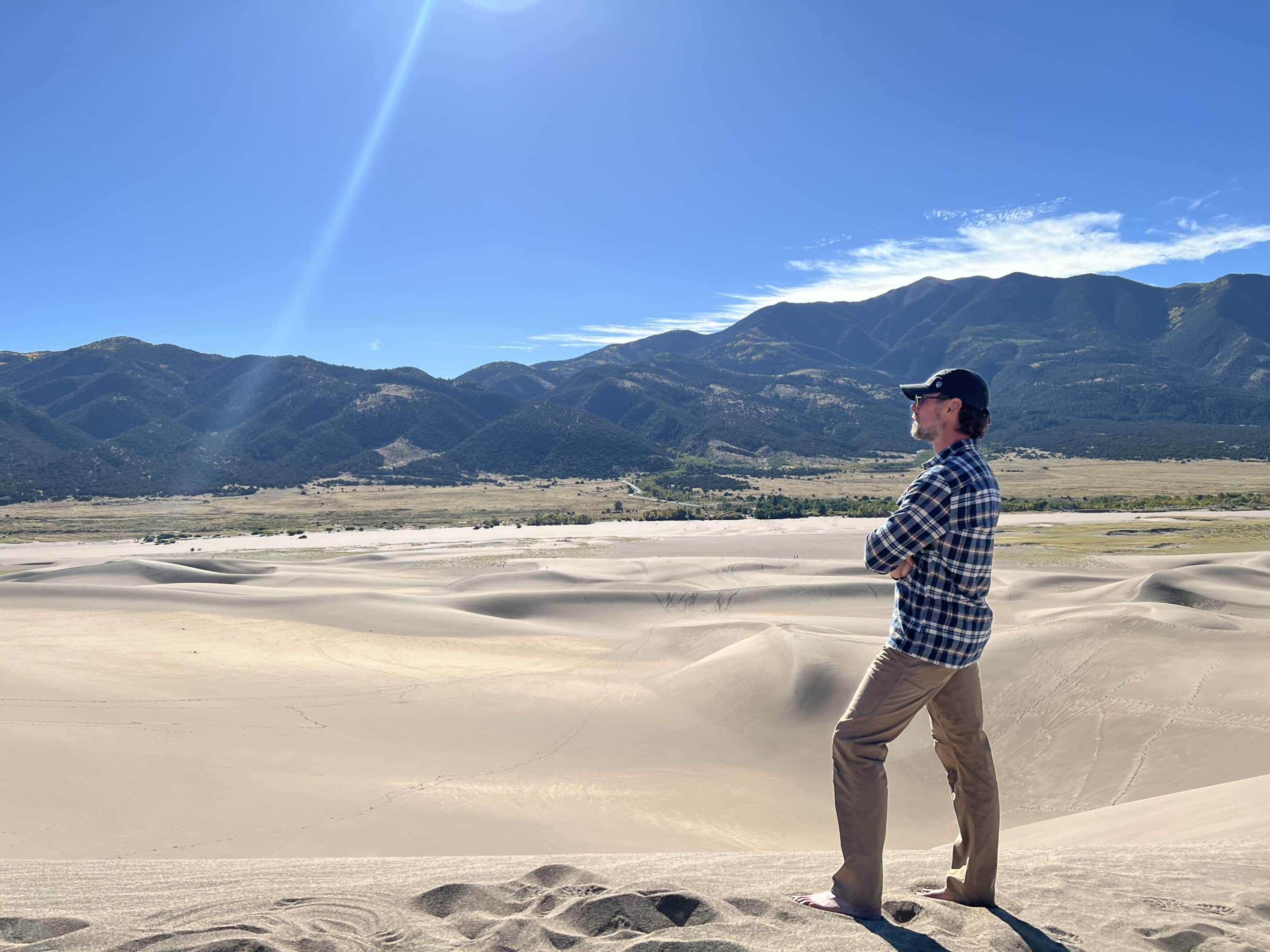

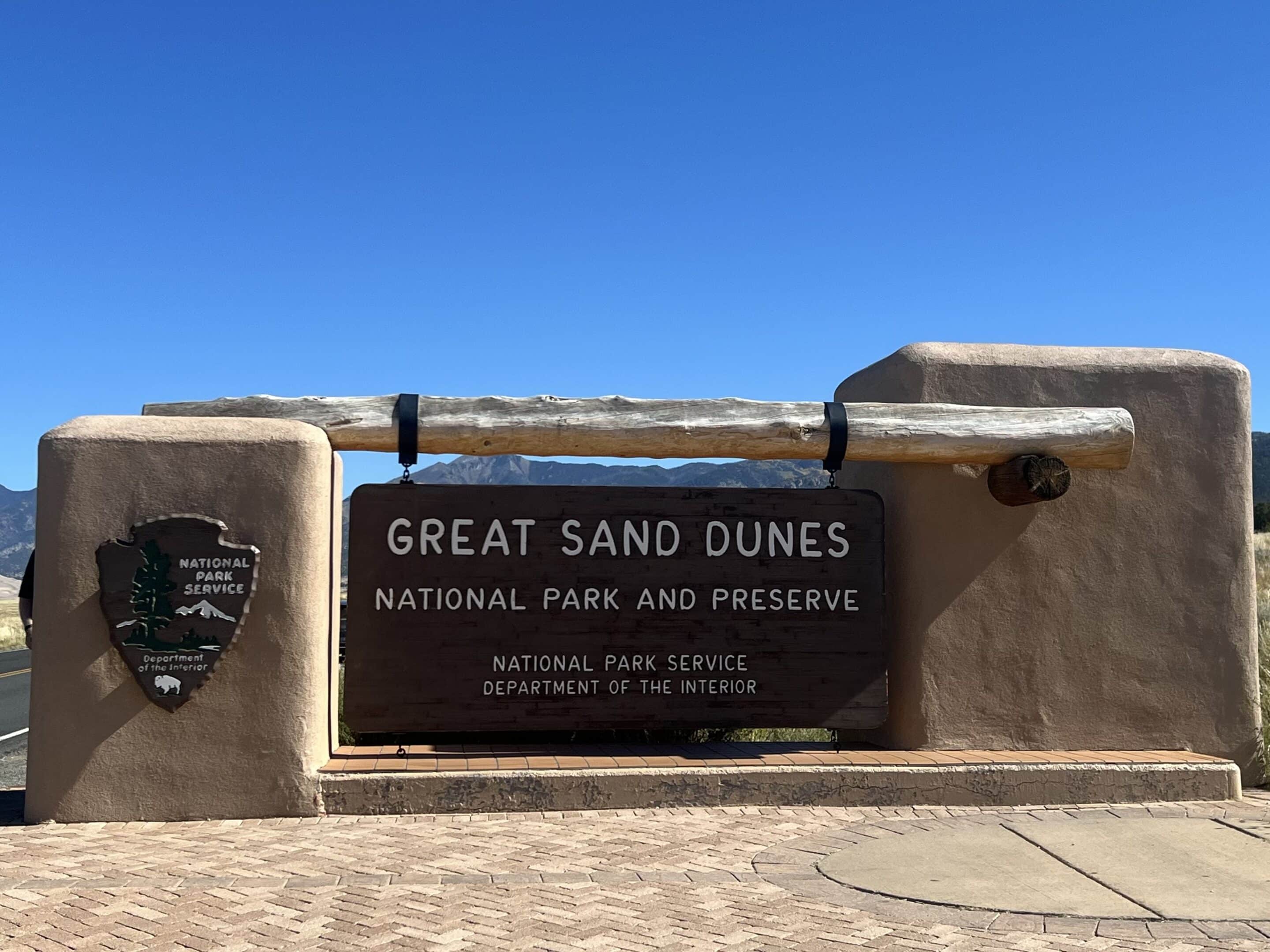

Following a calorie burning morning of hiking up and down those dunes, we hit the road and drove 6.5 hours to Ogallala, NE and stayed here: Kingsley Dam Resort – Welcome To Kingsley Dam. I’ll get deeper about this drive in the next section.
Day 4 – Fished Lake McConaughy, Nebraska
After a good night sleep, Janice and I work up early and linked up with Brad Hahn, owner of Big Mac Spoiled guide service (lakebigmacspoiled.com – Fishing guide) for a day of fishing on Big Mac. It was a slowish session but a blast fishing with Brad. Great boat, good gear, awesome level of knowledge, impeccable professionalism – everything you can hope for from a guide.
Jigging “slabs” and blade baits was the tactic of the day. It worked! I just started dabbling with jigging for ‘eyes on Lake Erie – this trip made me want to try it more often back home.
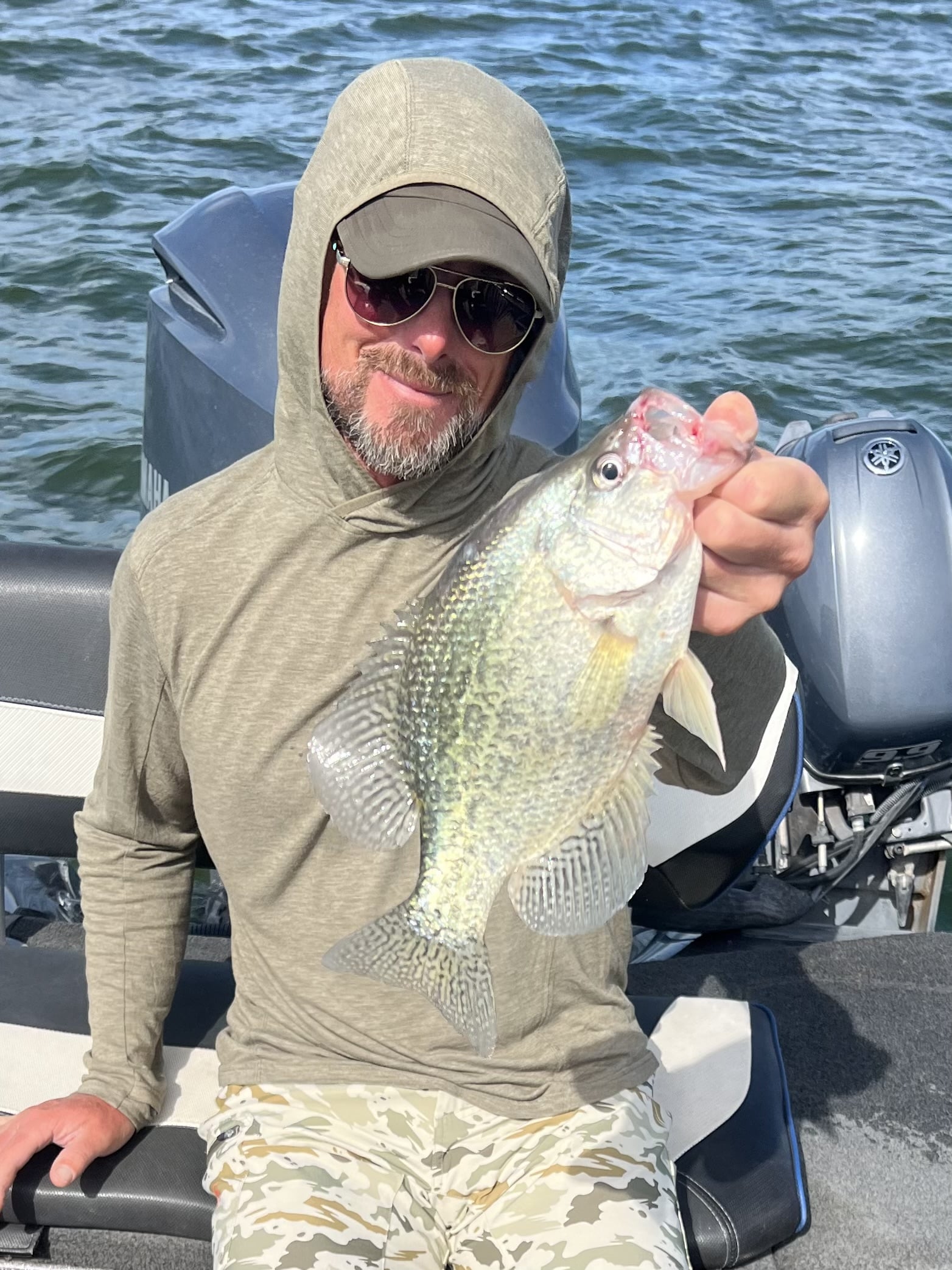
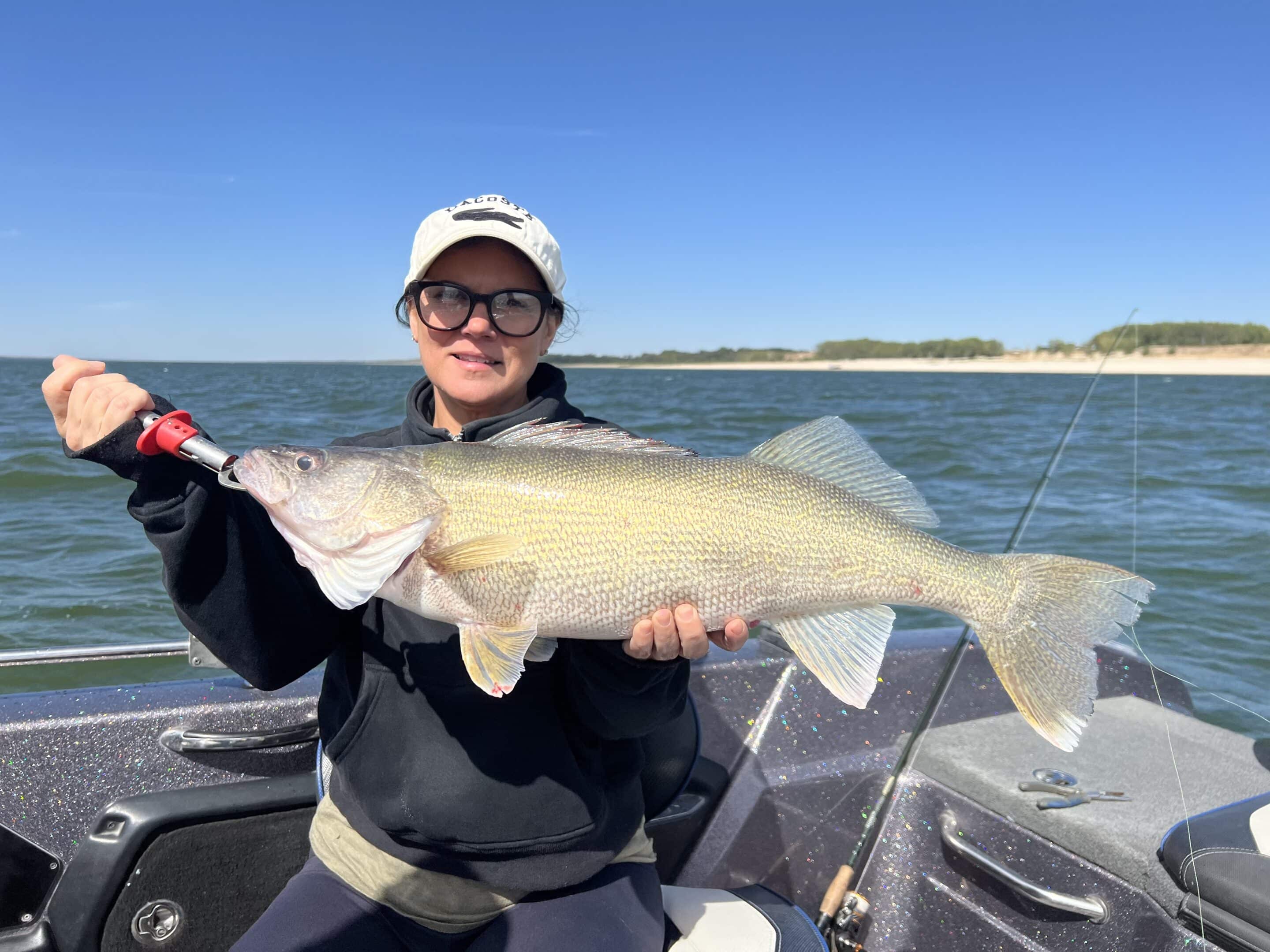
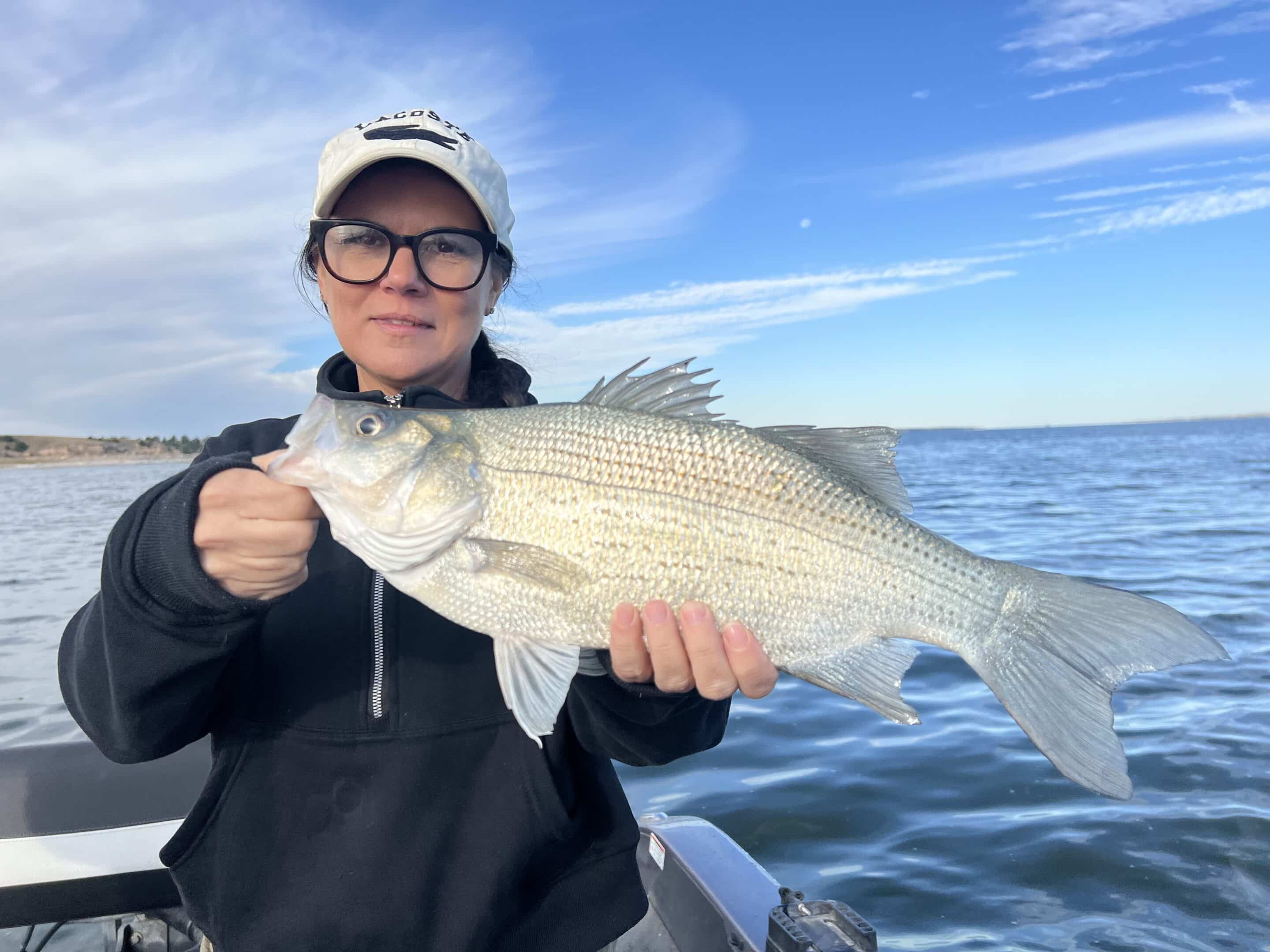



Day 5 – Weather Day/Exploration Day
Sustained 25mph winds out of the NE with gusts into the 40s caused us to cancel the trip for the day. However, Brad was able to reschedule his clients for the following day, giving me an opportunity to make up for the lost time.
Janice and I spent our day off exploring the Sand Hills. I’ll say it again, that’s some of the wildest terrain I’ve ever seen and all of it was brand new to me. There were so many instances where I pulled over to take pictures. Then would look at them in my photo album and delete them because they failed to show what I could clearly see with my own eyes. Here’s a couple that kinda worked.

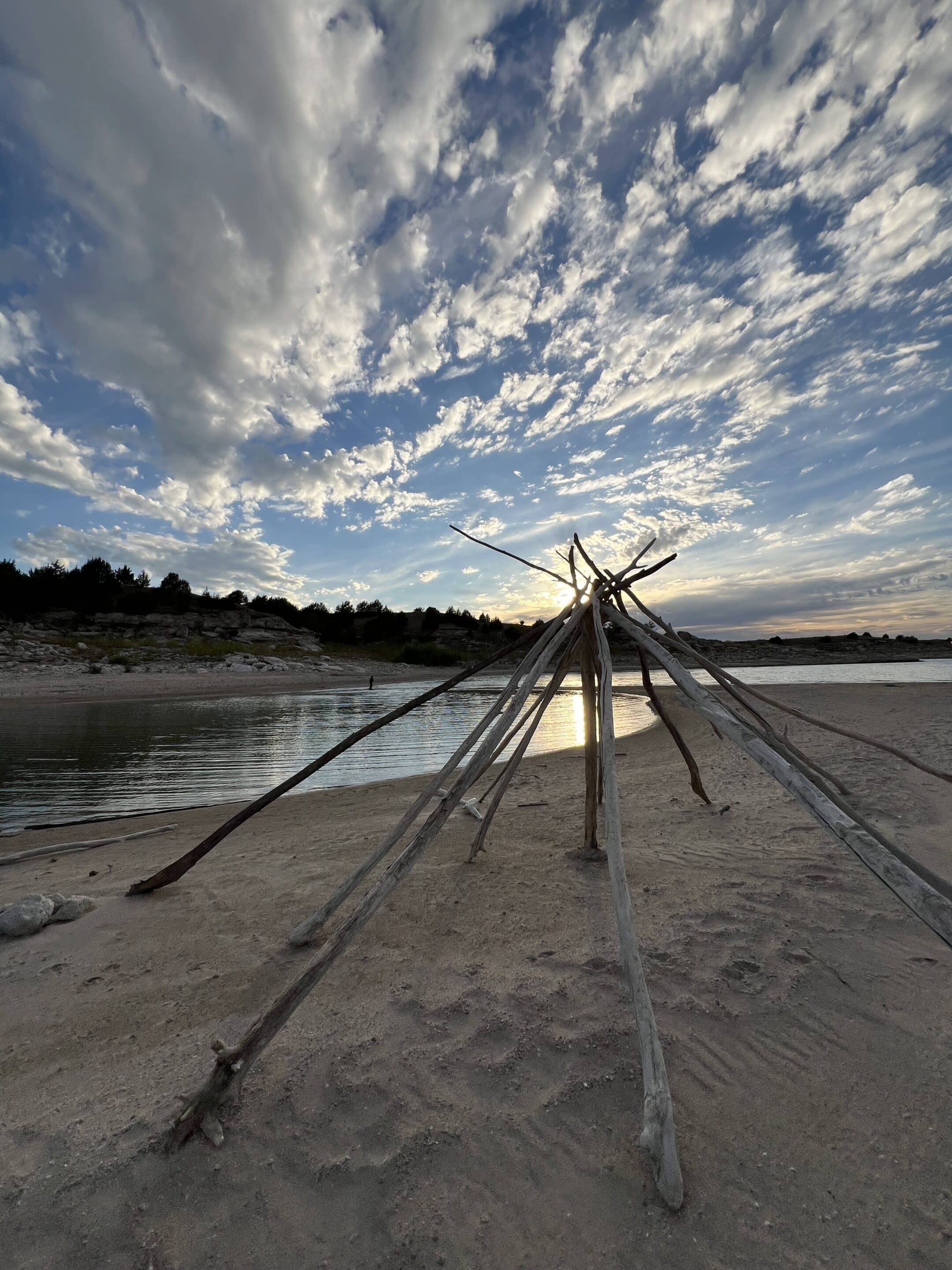


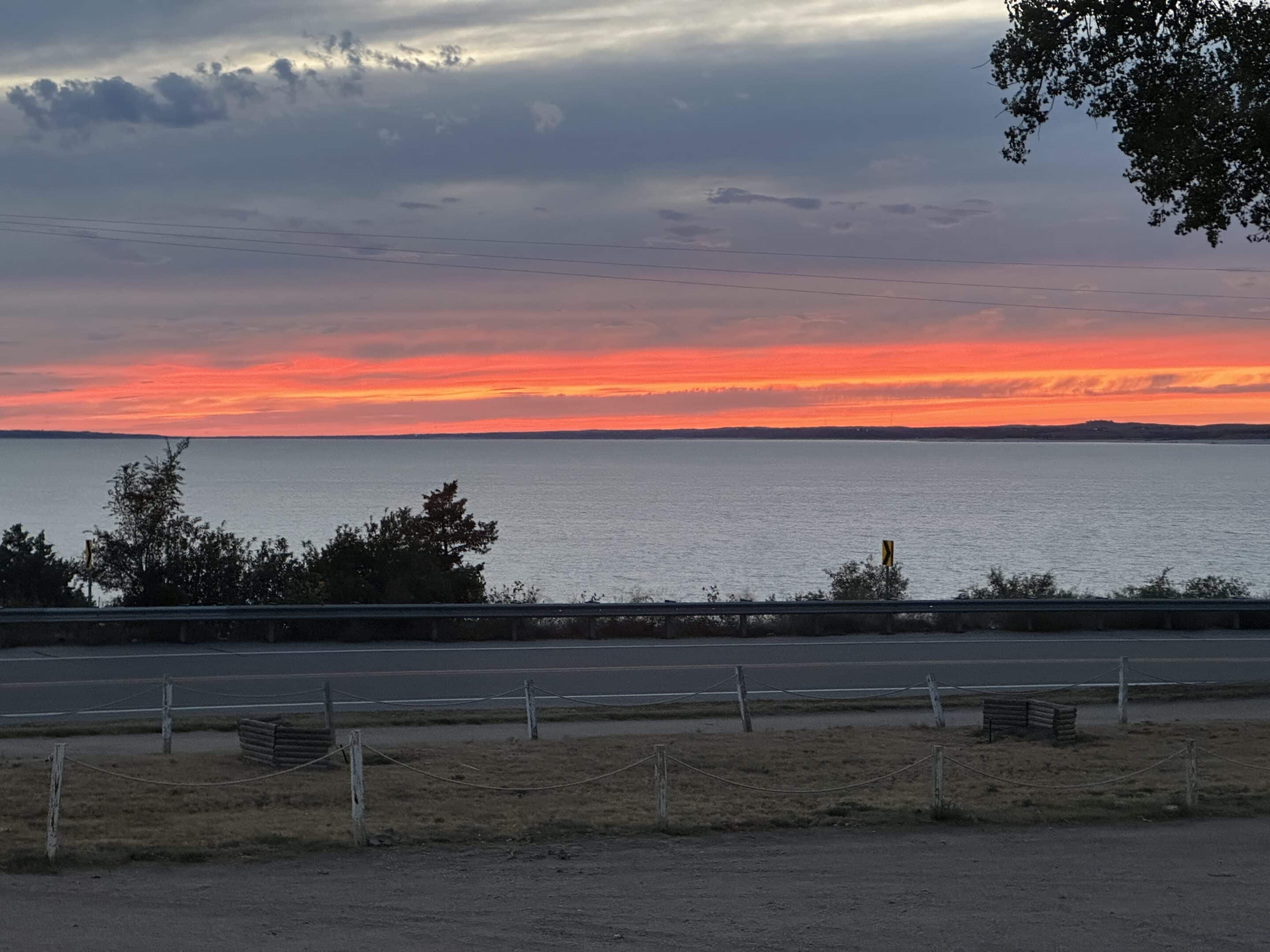
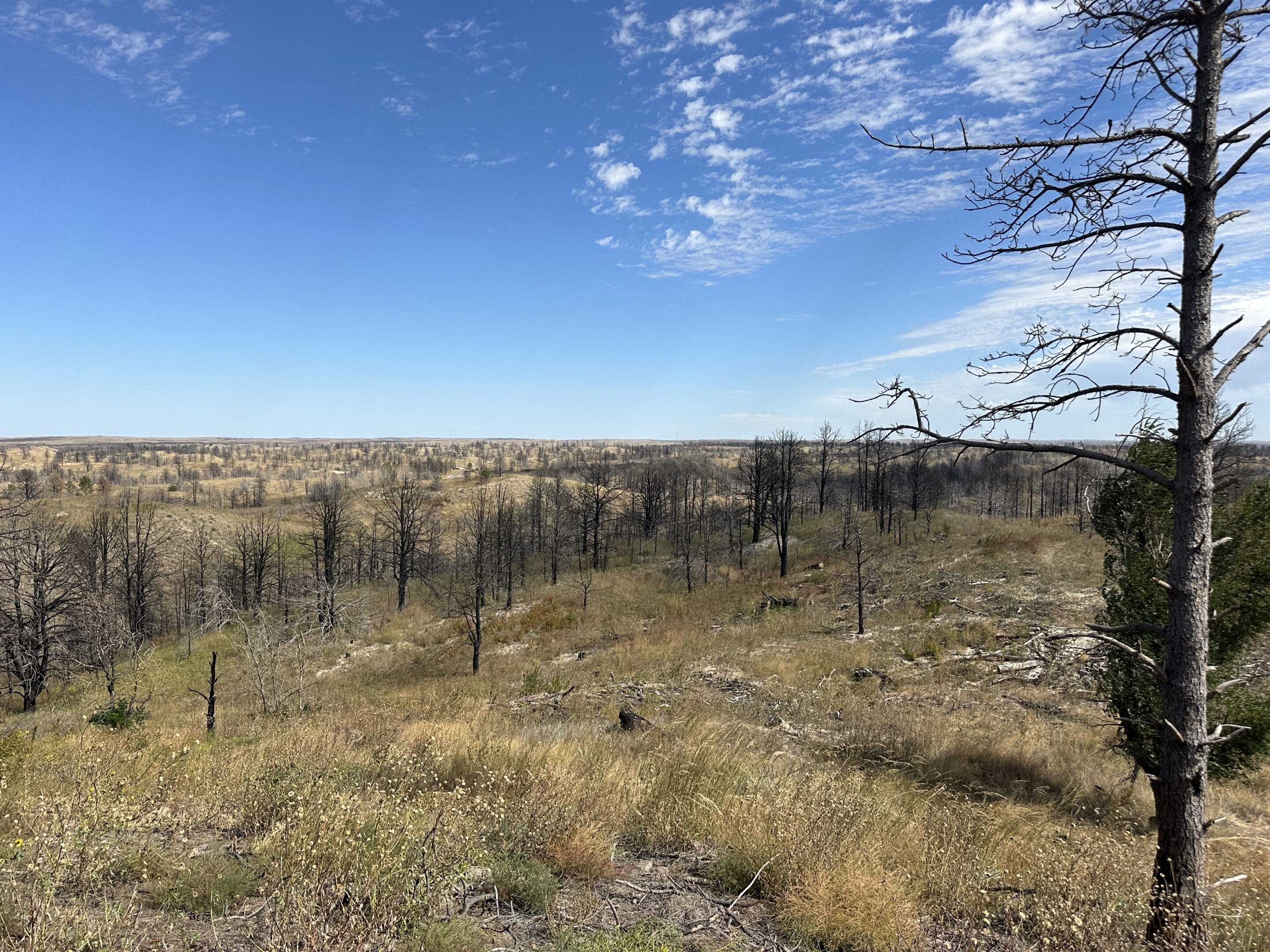
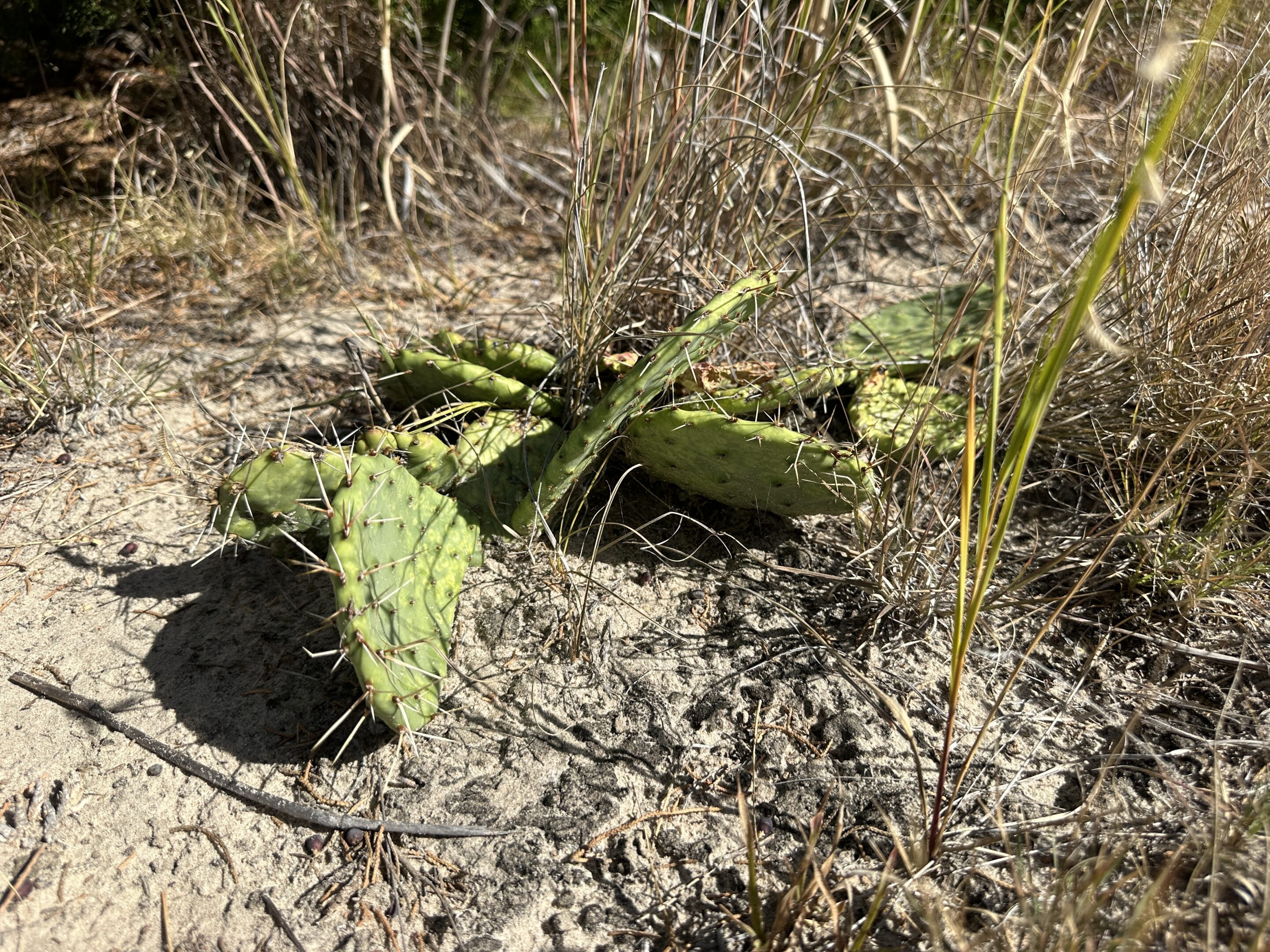
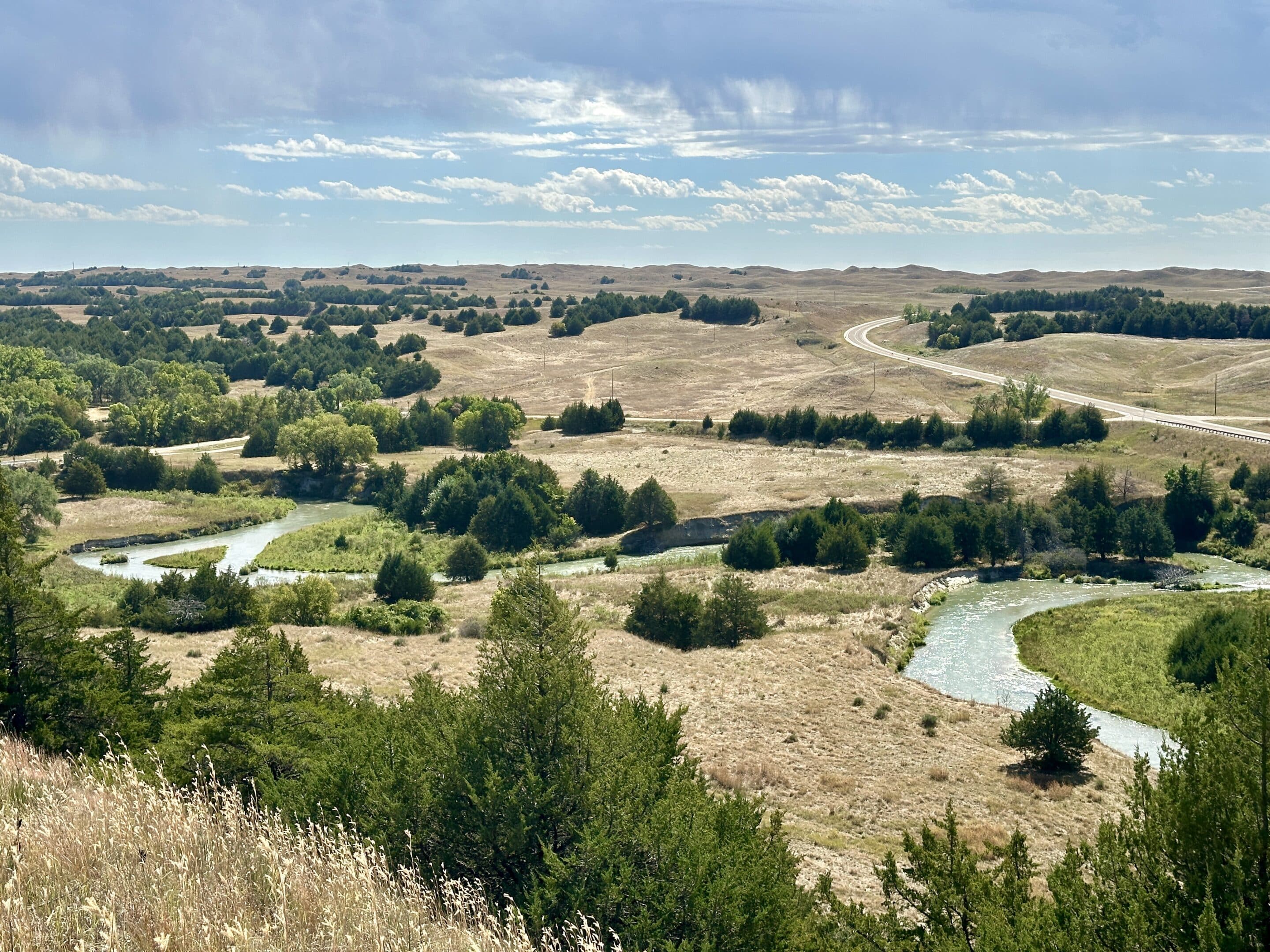
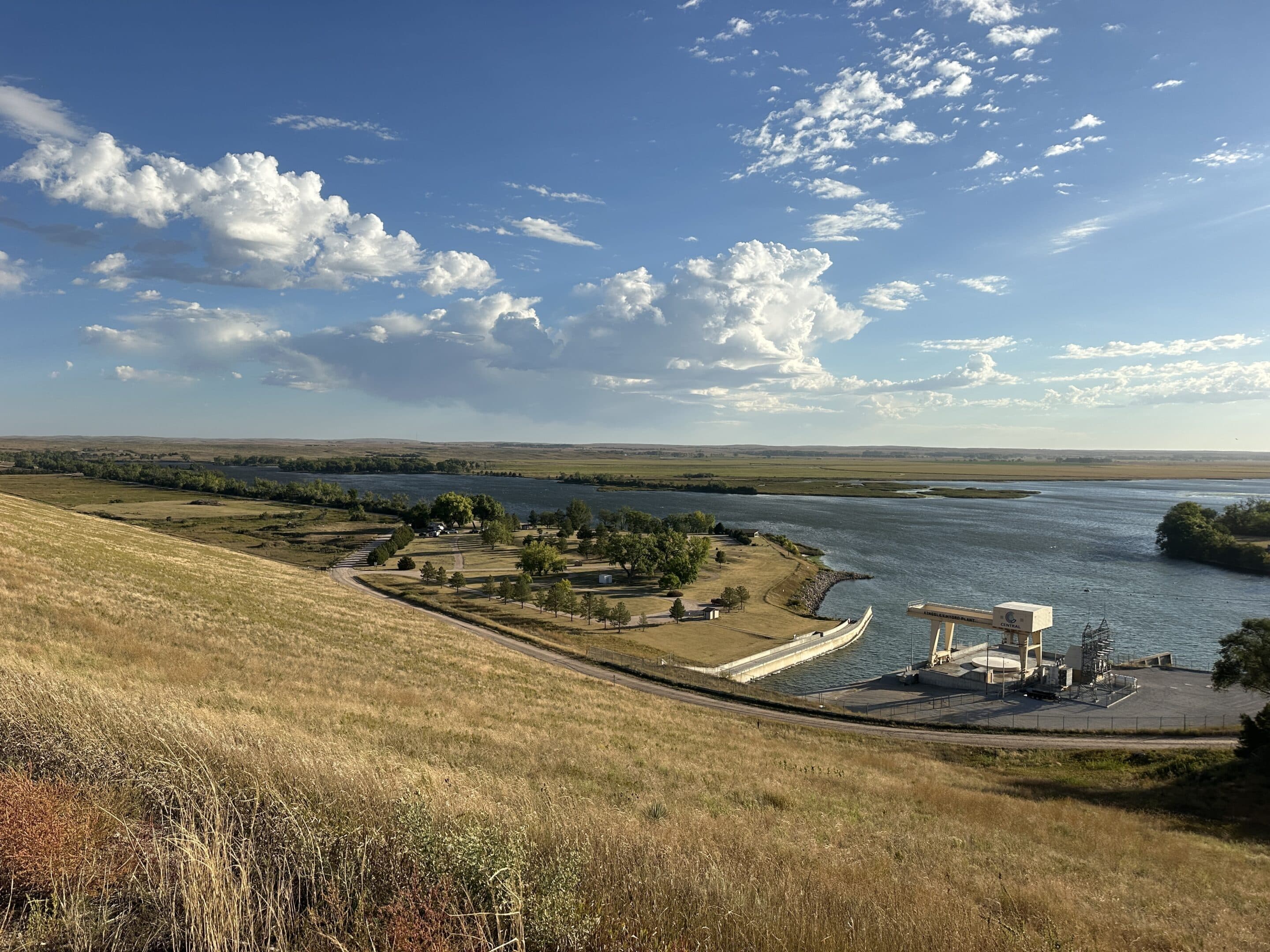
Day 6 – Back on Big Mac
Fished in the morning with Brad again. The lake was calm, and we jigged our assess off until around noon. We caught some catfish, white bass, drum, and one walleye. It was slow, but it gave Brad and I a lot of time to trade stories about guiding and our various life experiences. Janice and I hit the road to Denver, CO around 1:00PM and flew home from there. Side note – Denver International Airport is a freakin’ mess and I’ll avoid flying into or out of there whenever possible – enough said.
Thoughts from the Water
I’m going to go in a different direction from the norm with my trip summary on this one. First, I’ll discuss the terrain of the region I covered. Second, I’ll dive into what I noticed about the angling cultures. Finally, I’m going to dip my toes into what might be a quagmire – industrial agriculture and human manipulation of the landscape (think earthworks, control of rivers/water, and other huge engineering schemes). Here it goes.
Landscape
Albuquerque, NM to Durango and Navajo Dam
Driving from Albuquerque, NM to Durango, CO and later from Durango, CO to Navajo Dam, NM is a mind blowing journey. Pictures taken with a phone just don’t do it justice. I took many but was happy with very few.
It’s a lot to take in, you need to be there to appreciate it. I’m not sure what geologists say about it but that whole area looks like an epic flood tore its way through region unearthing long fingers of ancient seabed in its path.
Once you get into Durango or Navajo Dam, you’re in more of a mountainous, alpine region. If you have a picture in your mind of what the Rockies look like, that’s it. Huge mountain peaks, juniper trees, aspens, sporadic creeks, and rivers are always in sight. Gorgeous.
Navajo Dam to the Great Sand Dunes
As you drive from Navajo Dam, NM to the Great Sand Dunes, you go from high alpine to the edge of the desert. All I can say about the dunes is…wow. Just…wow. To say it’s a vast area of huge sand dunes just doesn’t cut it. I’ve never seen or experienced anything like it.
As we walked around those dunes and tried to wrap our heads around what we were seeing, we noticed other people in the distance who started the same walk from the parking lot. They appeared as specks on the landscape, giving us some perspective about the vastness of that sea of sand.
Every time we crested a dune, the scenery changed. I felt compelled to keep moving just to see what was over the next dune. An hour passed (or was it a couple minutes) and somehow it seemed like we walked miles and only a few yards at the same time. It’s very disorienting yet captivating.
If you’re ever lucky enough/make it a priority to visit this area, I highly recommend you hike from dusk to dark or from pre-dawn to mid-morning. I mention this for a couple reasons. For one, the air is dry (you get dehydrated quickly) and the sand gets hot. It’s a far more pleasurable experience when you can avoid the heat. Secondly, the light/colors that occur at dawn and dusk make the area incredibly beautiful. Oh yeah, the night sky and the light-colored sand makes you feel like you’re on Mars or the moon.
Driving from Great Sand Dunes to Lake McConaughy, Nebraska
It was a 6.5-hour drive from the dunes to Big Mac and the terrain changed wildly. The first couple of hours took us into some more alpine. The middle 3 hours were flat and desert. The roads were so flat and straight you could go 100mph and never know it. We’d often drive for more than 30 minutes and never see another car or sign of human life.
Then, as we approached Nebraska, the scenery changed. Water started showing up and the desolate landscape shifted to sand hills, grassy prairies, and an abundance of corn fields/crops. Although all those crops spoiled the landscape for me, when we got deeper into the sand hills, the crops dissipated, and rolling hills dominated our view.
I tried countless times to take pictures to capture this landscape, but all were a pitiful representation of what we saw. Picture this – sand dunes spreading to the horizon in all directions. However, those sand dunes are covered with grass and there are countless hidden valleys and marshes dotted throughout. Little towns where maybe a handful of people live are hours apart – and you’re lucky if there’s a gas station.
Landscape Summary
Not trying to flex with the following comment: I’ve fished a lot of water around this country (48 states so far). Going into this trip, I thought I had seen it all. I had not – and am questioning what else I’ve missed.
Like so many of my trips to the states in the heart of our country, there was some level of dread prior to arriving. I mean, who from the Great Lakes region willingly travels to Nebraska, Oklahoma, North Dakota, or name another state in the middle of the U.S.? I get it, money and time are precious. Still, I have yet to be disappointed on any of my adventures to the “fly over” states.
Angling Culture Observations
I’m not sure why I’ve never discussed this in previous trip reports but every angling destination I’ve visited has had its own, distinct culture. The guides on the San Juan and Lake McConaughy were no different.
The San Juan
I’ve fished numerous western tail water fisheries, and they all have one thing in common – crowds. And why wouldn’t they? Because tail waters often run cold, clean, and clear water, they can host a massive amount of life. However, because tailwaters are created by dams, they are easily accessible, and people know where to find them. It’s like the field of dreams quote, “If you build it, they will come.”
How the guiding community handles crowded water gives a little insight into their culture. The San Juan was CROWDED. Drift boats were everywhere, and anglers were wading around every bend. No one yelled, threw a fit, or complained about getting “low holed.” The crowds were always there, but they kind of disappeared into the background as the day went on. Keep in mind, there are so many fish there that one can set up just about anywhere on that river and start working a group of fish.
Operating like this as a guide requires a laid back, patient demeanor. It’s also important that they all get along and have a good rapport to avoid on-the-water drama. I saw this play out throughout the day. Everyone around us was having a good time and seemed to be happy despite what I thought were close to “bumper boat” conditions. Folks that know me know that I’m not a fan of crowds – AT ALL – yet, I had a good time.
Lake McConaughy
The angling culture around Big Mac reminded me a lot of what I saw on Lake Sakakawea and Devils Lake in North Dakota as well as Grenada Lake in MS. All the guides in these locations knew each other and got along. Nearly all of them ran high end fiber glass boats – Skeeters were the most prevalent on McConaughy. They are also keenly aware of the “water politics” in their regions.
Ogallala, NE, the closest town to Lake McConaughy, is a small town (population around 4,900). Its primary economic driver is tourism to Lake McConaughy. So, the residents work mainly in the service industry and are happy to accommodate visitors. Everyone we met was friendly. Most visitors to the area are from Denver, but Omaha and Lincoln are a close second and third. Brad observed that the culture is changing around the area as “old school” Coloradans are leaving Colorado for Nebraska due to an influx of Californians.
Without a frame of reference, it was hard for me to confirm what Brad told me. However, I can confirm that most of the license plates we saw were from Colorado. Similar to my tailwater observation about the San Juan – “if you build it they will come” – reservoirs draw folks in. What was distinct about Lake McConaughy was the presence of massive, public beaches. Folks can drive their cars/trucks/trailers right down to the beach, park, and camp for days. Oh yeah, Lake McConaughy is a dry lake (you can’t drink there) so although there can be a lot of recreational boat traffic in the summer, it’s tame.
Comparison of the San Juan and Big Mac to the Buffalo Niagara Region
Likely, few if any readers of this will end up going to either of these locations. However, I bet the San Juan would be the most probable of the 2 if someone decided to make a trek. I say this because Big Mac, other than a change of scenery, doesn’t provide anything distinct compared to our fishery. In fact, our region, Lake Erie in particular, is “better” in every category. From the amount of water available, to the size and number of fish, to the diversity of species, there are more options here. However, if someone from here went to Big Mac, you’d feel right at home. That wouldn’t be the case on the San Juan.
The San Juan is dominated by fly anglers. Folks that fly fish tend towards purism in their approach to angling and there are plenty of examples of how this purism isn’t very accomodating of “conventional” anglers. For example, you won’t find a guide on that river that’s willing or capable of guiding clients with “conventional” tackle. The region in general is expensive to access and guide fees are high compared to many places I’ve visited. In other words, it draws in a demographic of folks with $$$ to spend. However, if you want to see big trout everywhere and test your mettle with “pressured” fish that are learned, the San Juan is a great place to fish.
Both the San Juan and Lake McConaughy exist because someone, some entity, built a dam. Dams are very beneficial for us humans toward generating energy, but absolutely wreck the aquatic ecosystem. So much so that new ecosystems are “built” after construction. All those browns and ‘bows in the San Juan are/were put there. The same thing goes for the fish on Big Mac – it’s stocked heavily as there is very little natural recruitment. Why are these bodies of water stocked with fish? I guess as some form of compensation for wrecking what was there prior. Ok, that’s a little disingenuous, those fish are introduced to create an economic opportunity as well.
I find it a little incongruent that there are distinct cultures between those that fish reservoirs and those that fish what comes out of them. I’ve fished a lot of reservoirs and a lot of tailwaters – this phenomenon isn’t unique to what I saw on this trip. Think about it this way – reservoir anglers are fishing the lake side of the dam and tailwater anglers are fishing the outflow (the other side) of the dam. A man-made wall of concrete and earthworks separate the 2. I guess I’m advocating for a little cultural exchange/blending as they both share similar problems – mainly everything associated with the fact that someone is controlling the flow of water/water level.
Conclusion
After chalking up my 48th state (I have Delaware and Hawaii left), I’m a little more learned. I fished, walked, and drove through completely new terrain. I connected with guides and learned about their challenges and their lifestyles – what we have in common and what our differences are. I saw once again what I’ve seen dozens of times now in my travels – if there’s water around, folks will fish it, and a angling culture will form around it.
I doubt I’ll return to either of these fisheries. Not because I didn’t enjoy myself, but because they didn’t offer much of interest that I hadn’t done before, or I don’t already do now. Still, I have no regrets about the itinerary and wouldn’t have done it any differently. The best part of all of it – I got to spend 6 days hanging out with Janice just exploring. We had fun, just us 2, and came out of it with stories to tell and a couple new magnets for our fridge.

